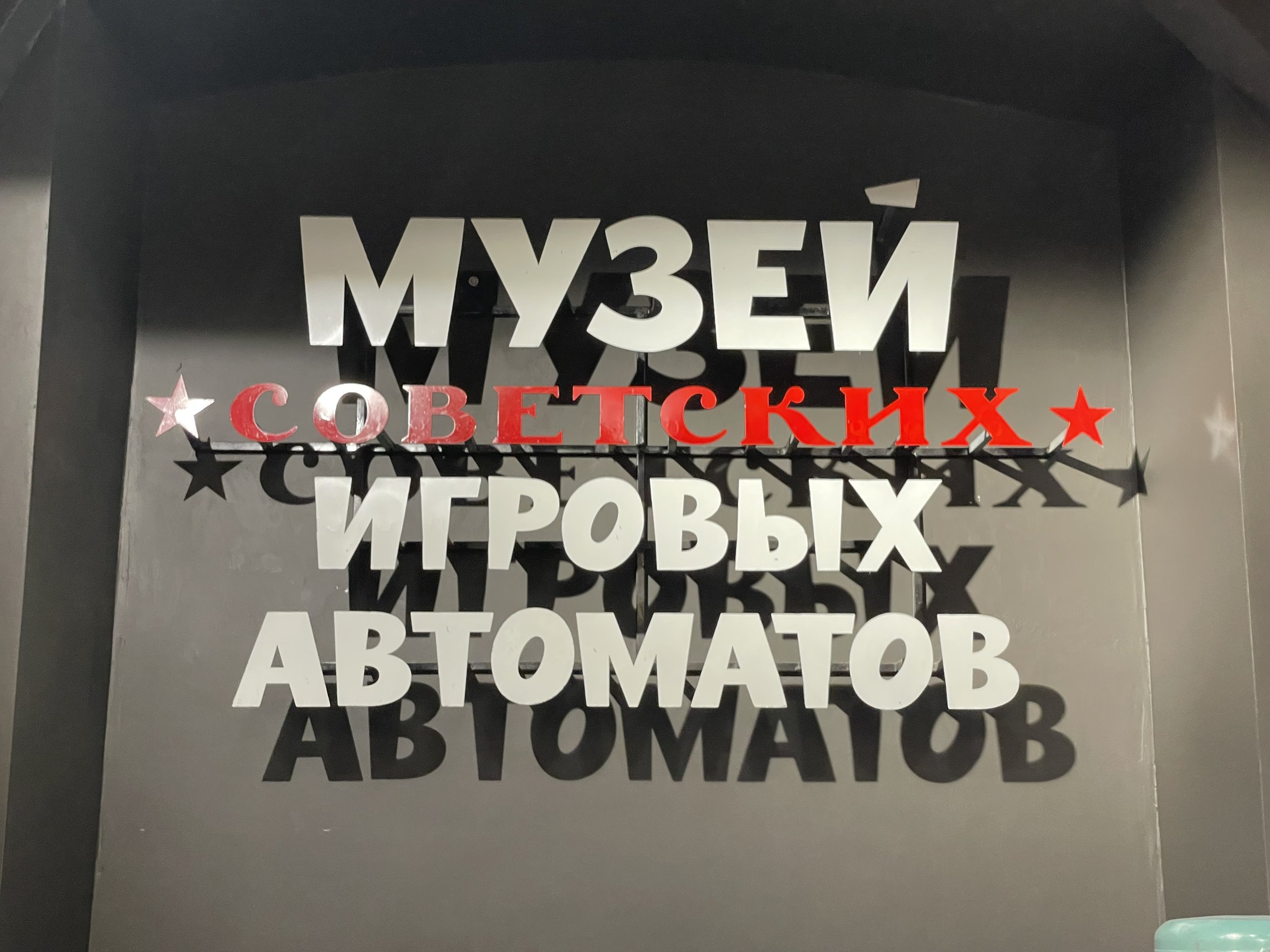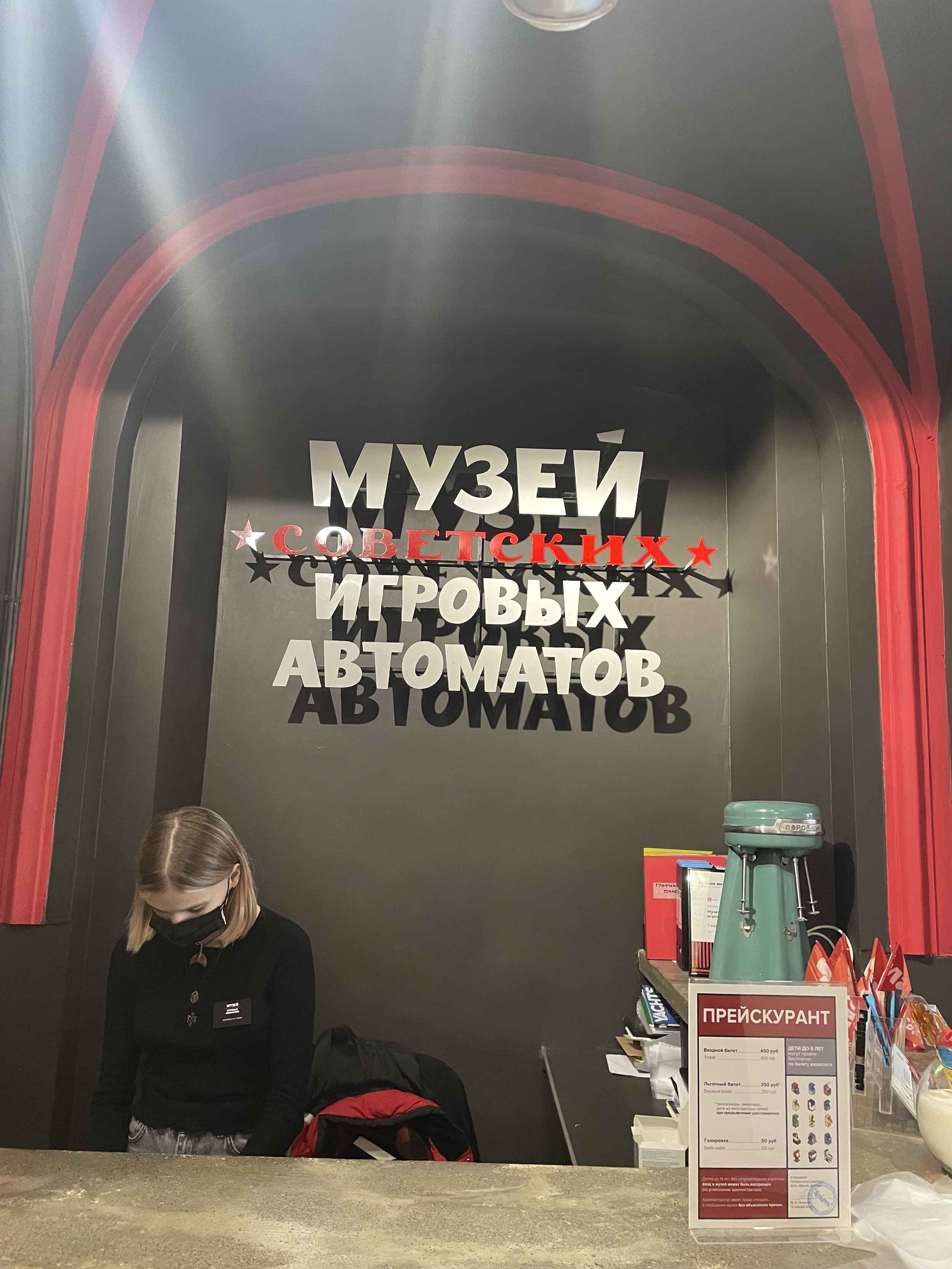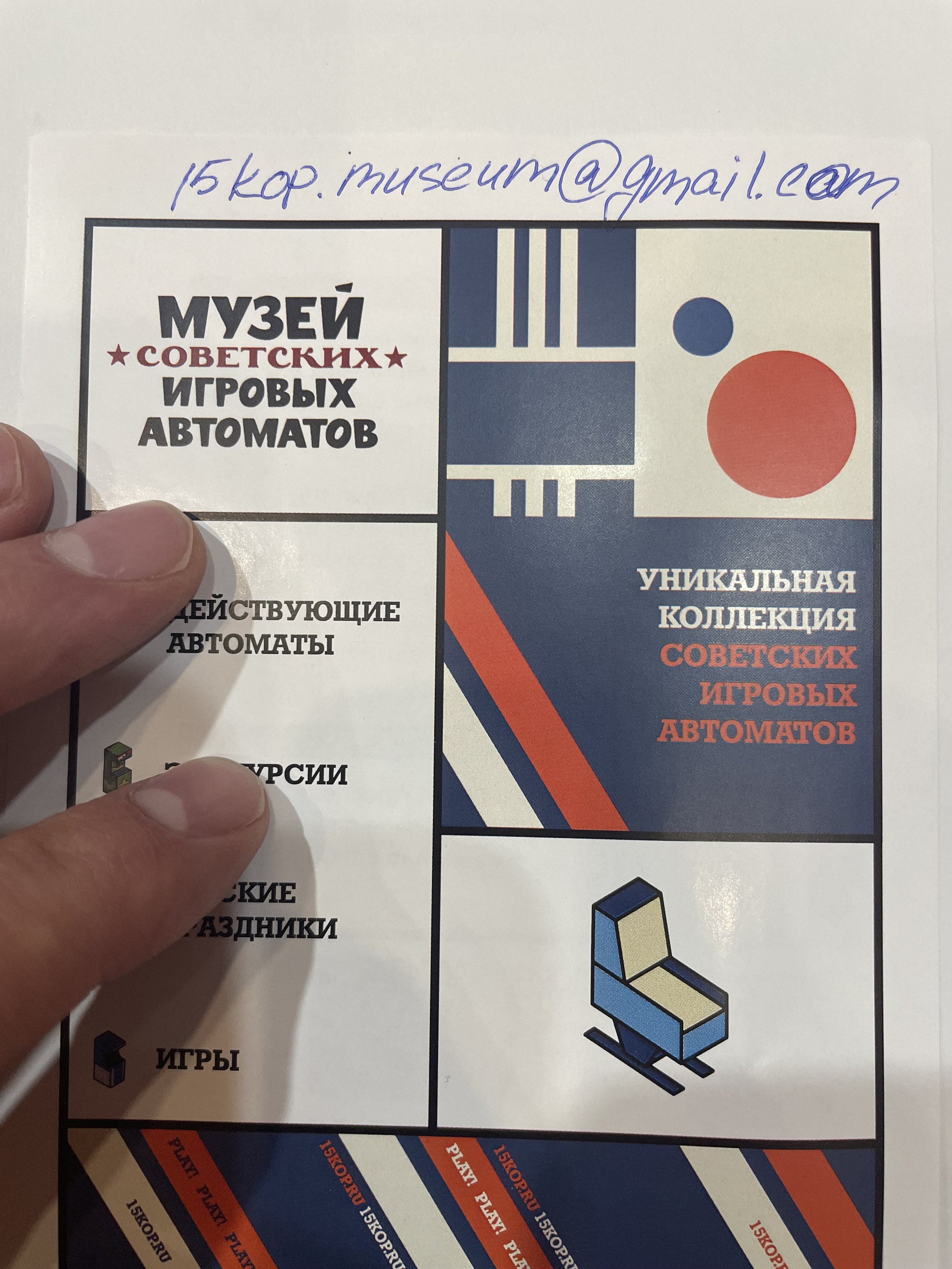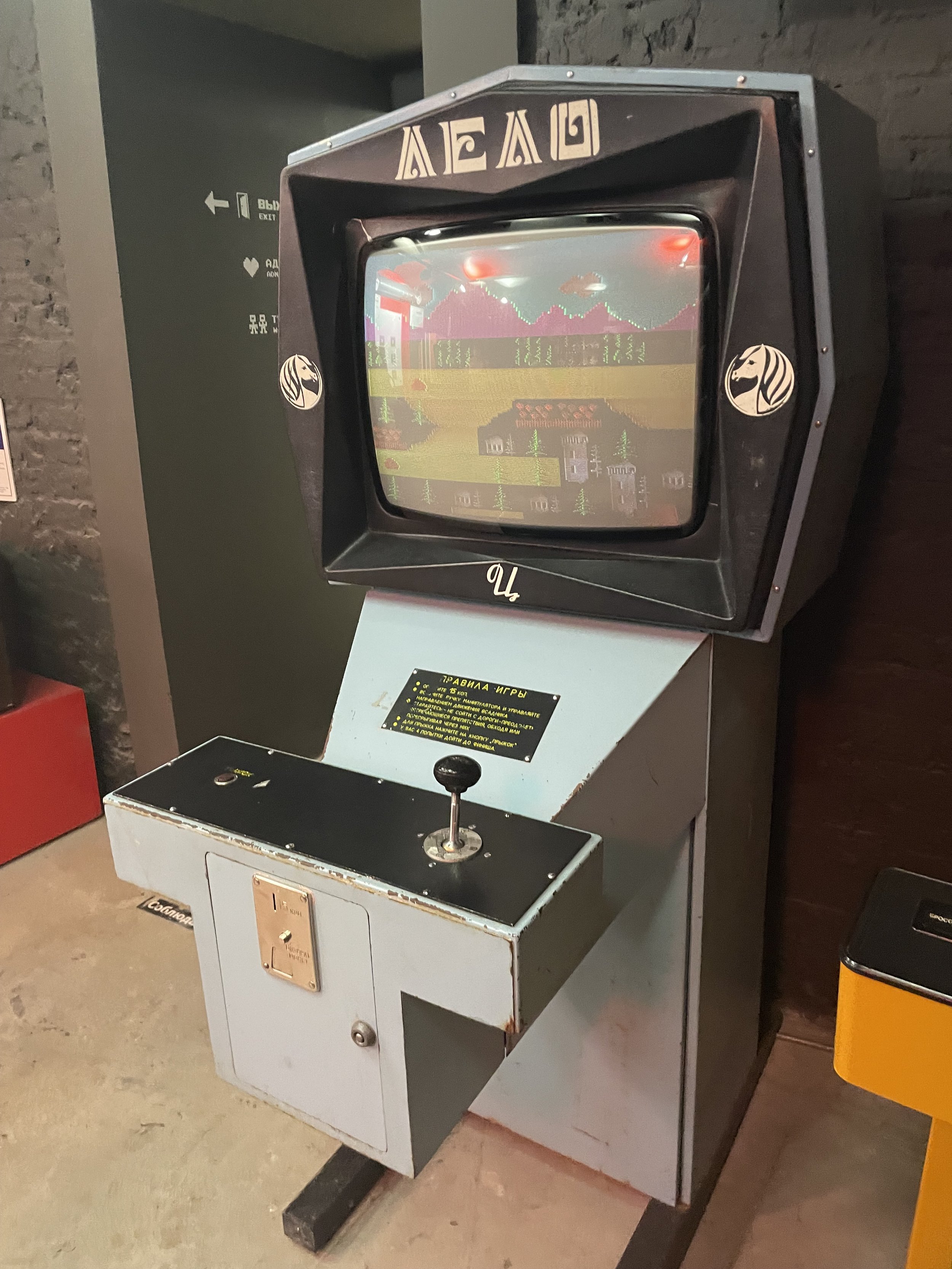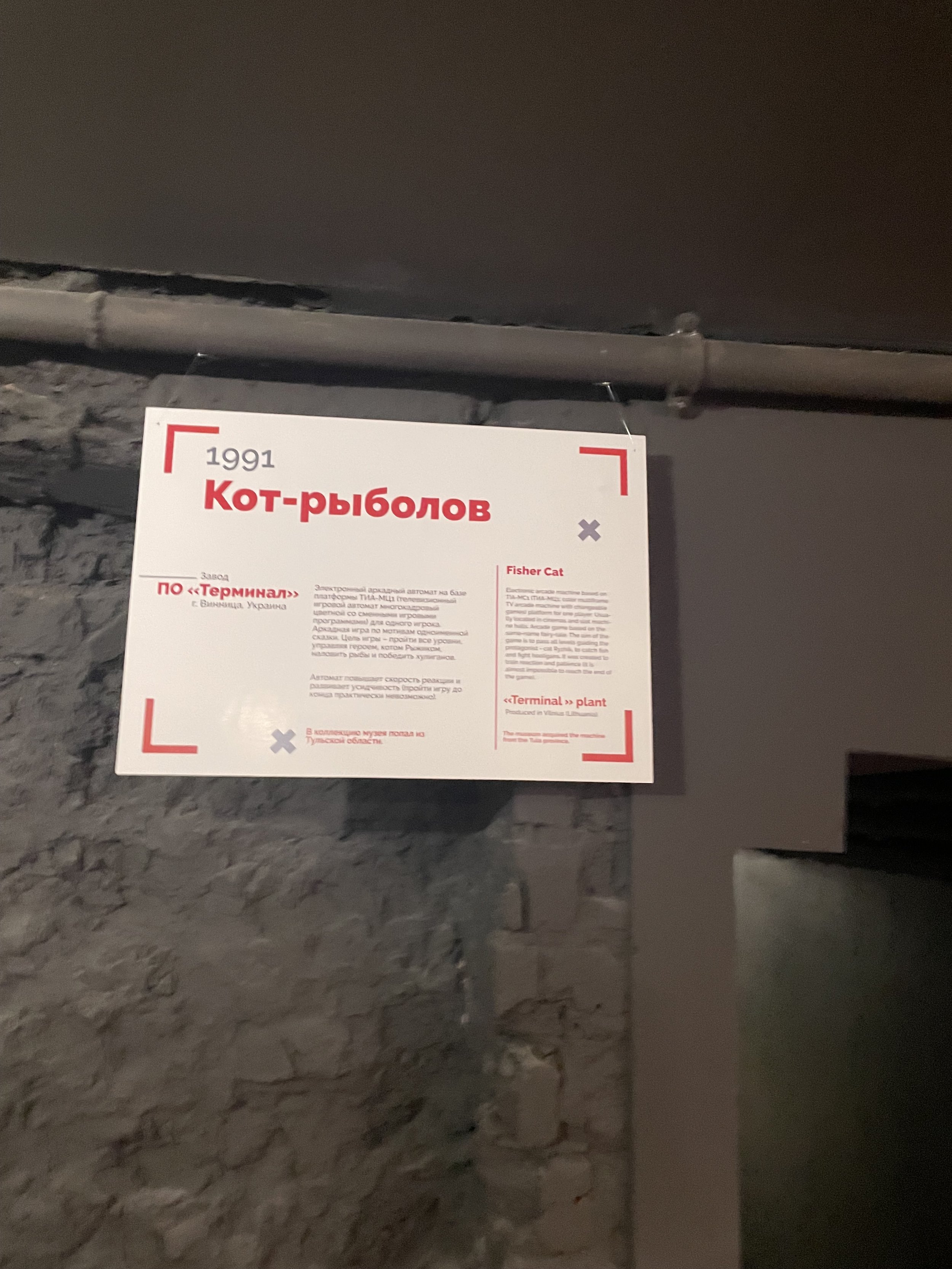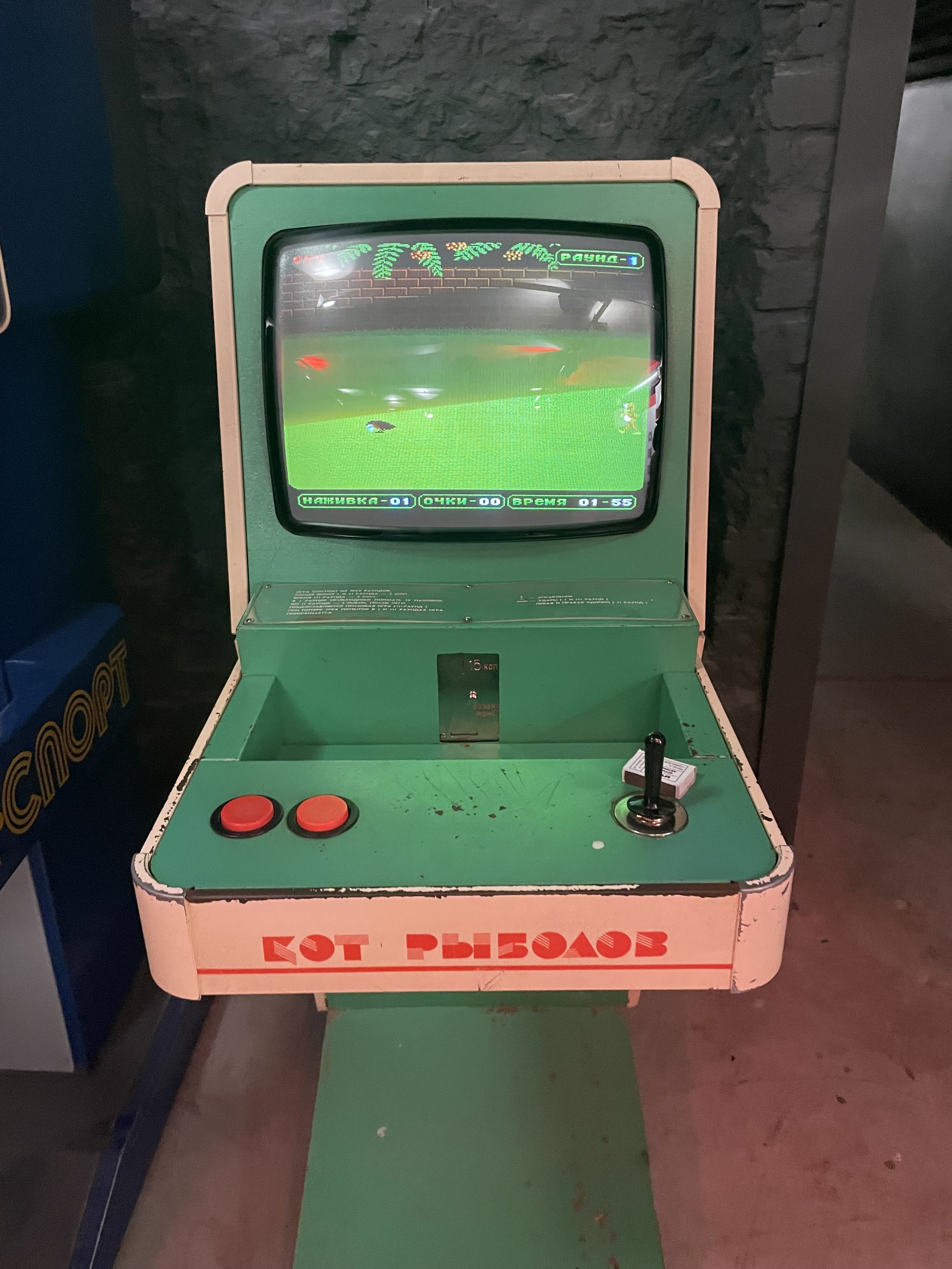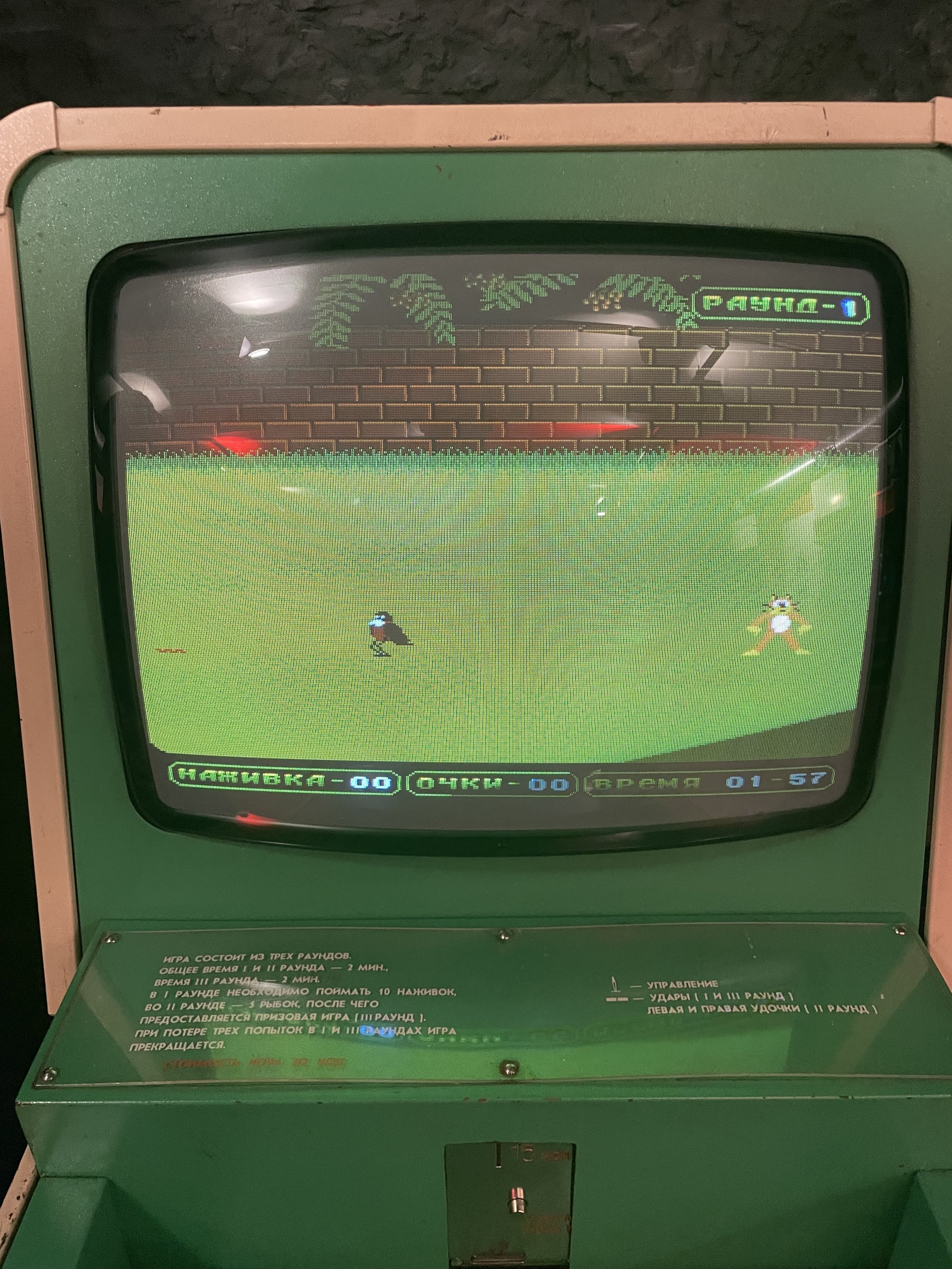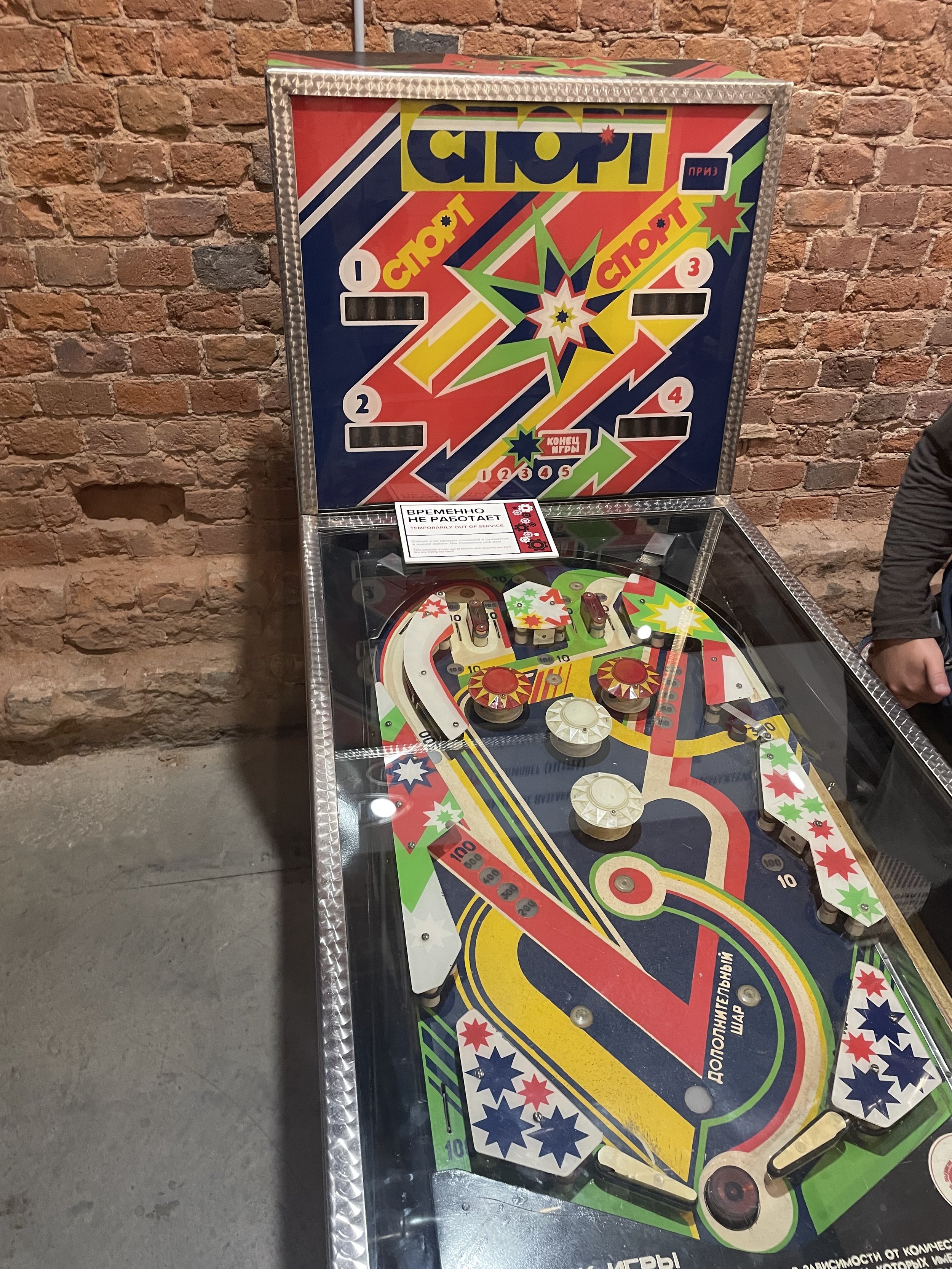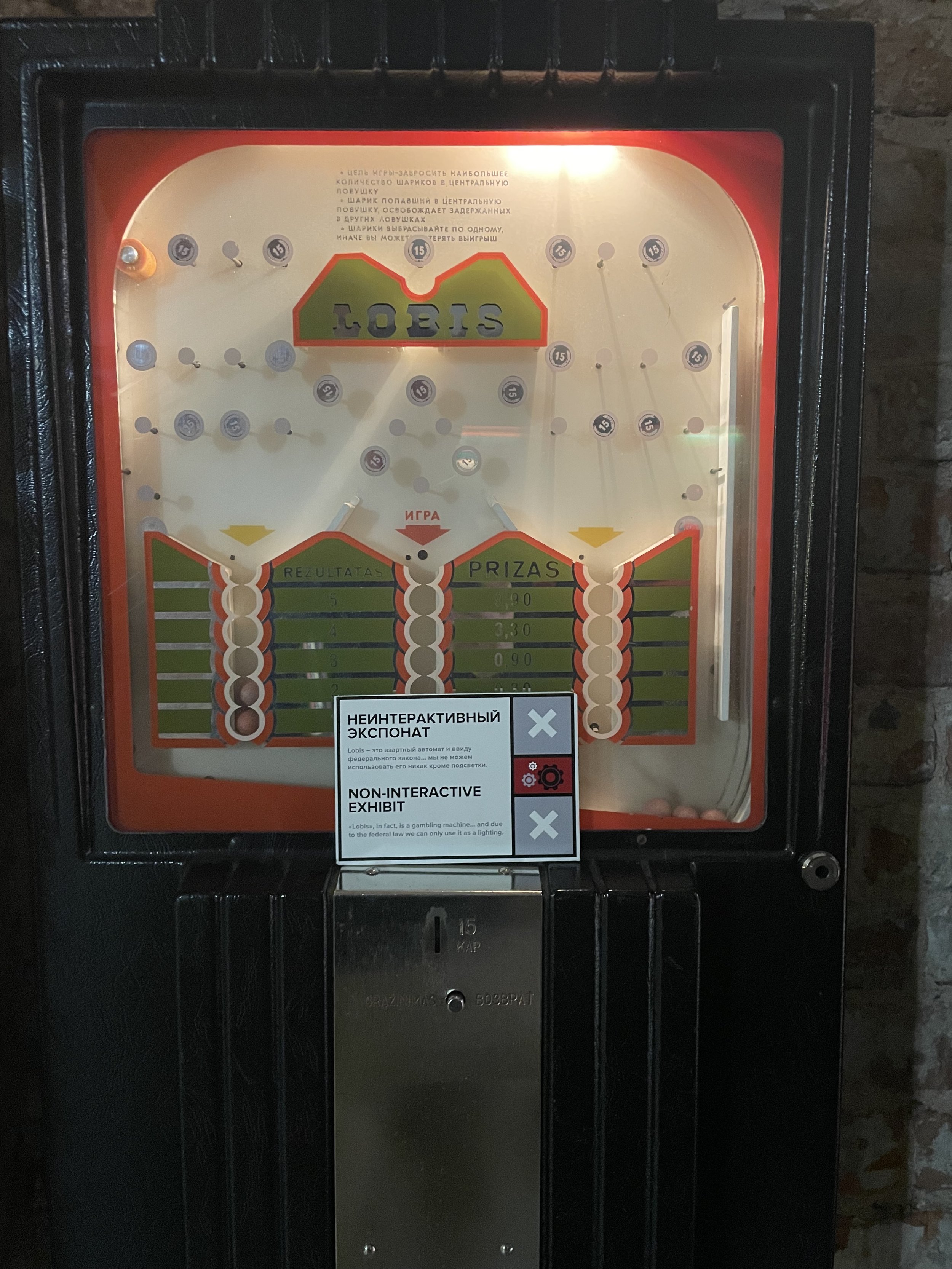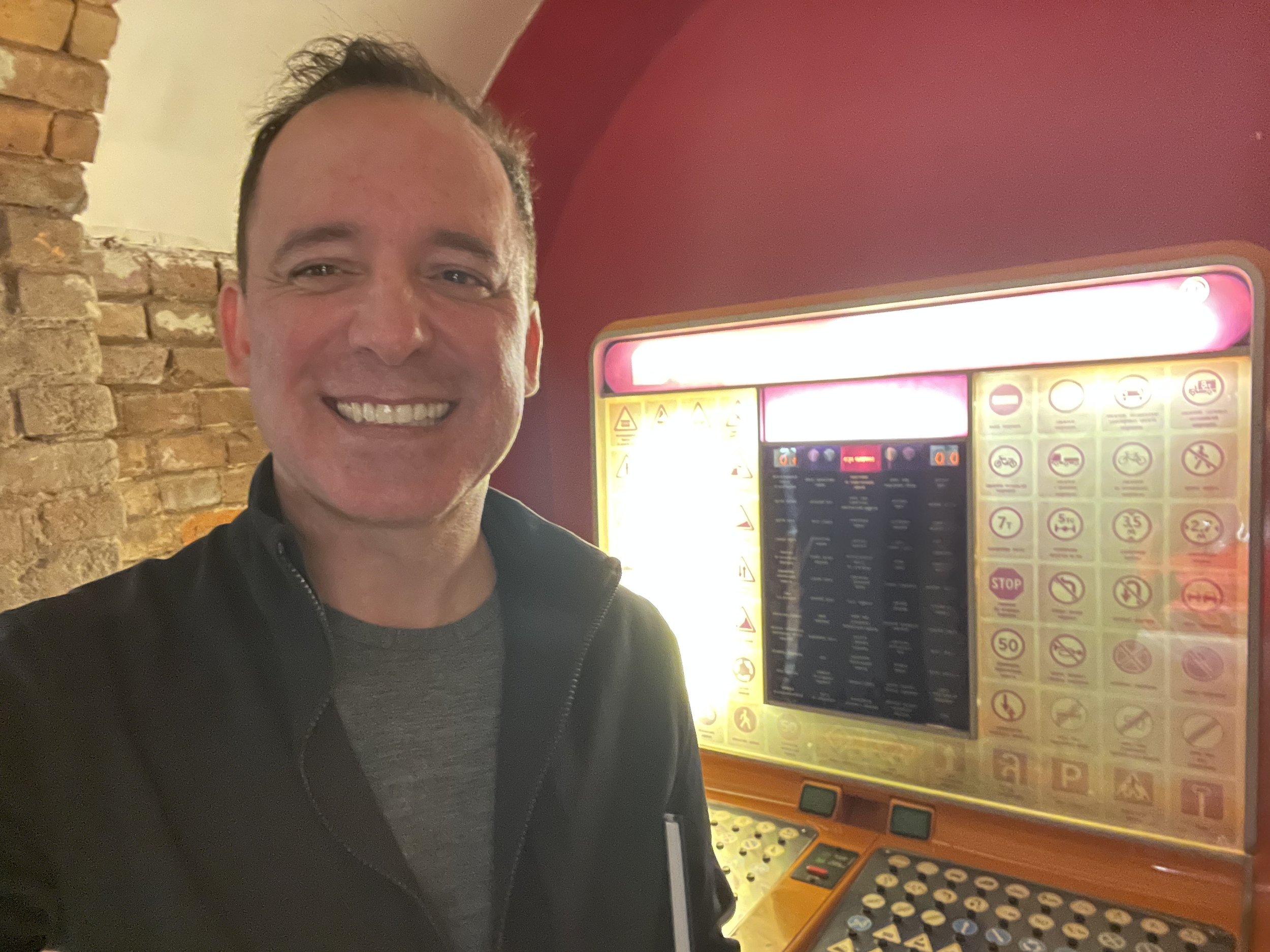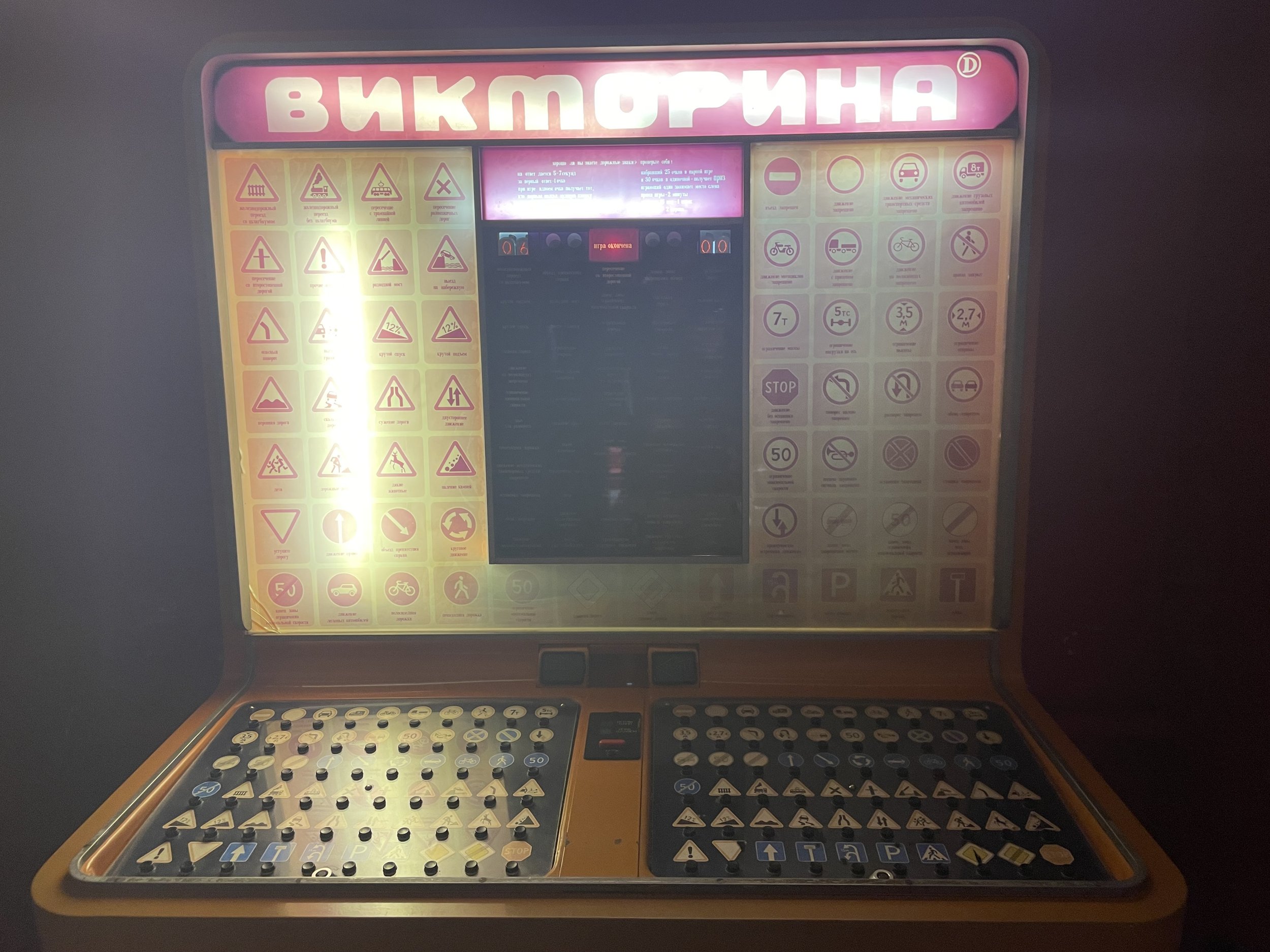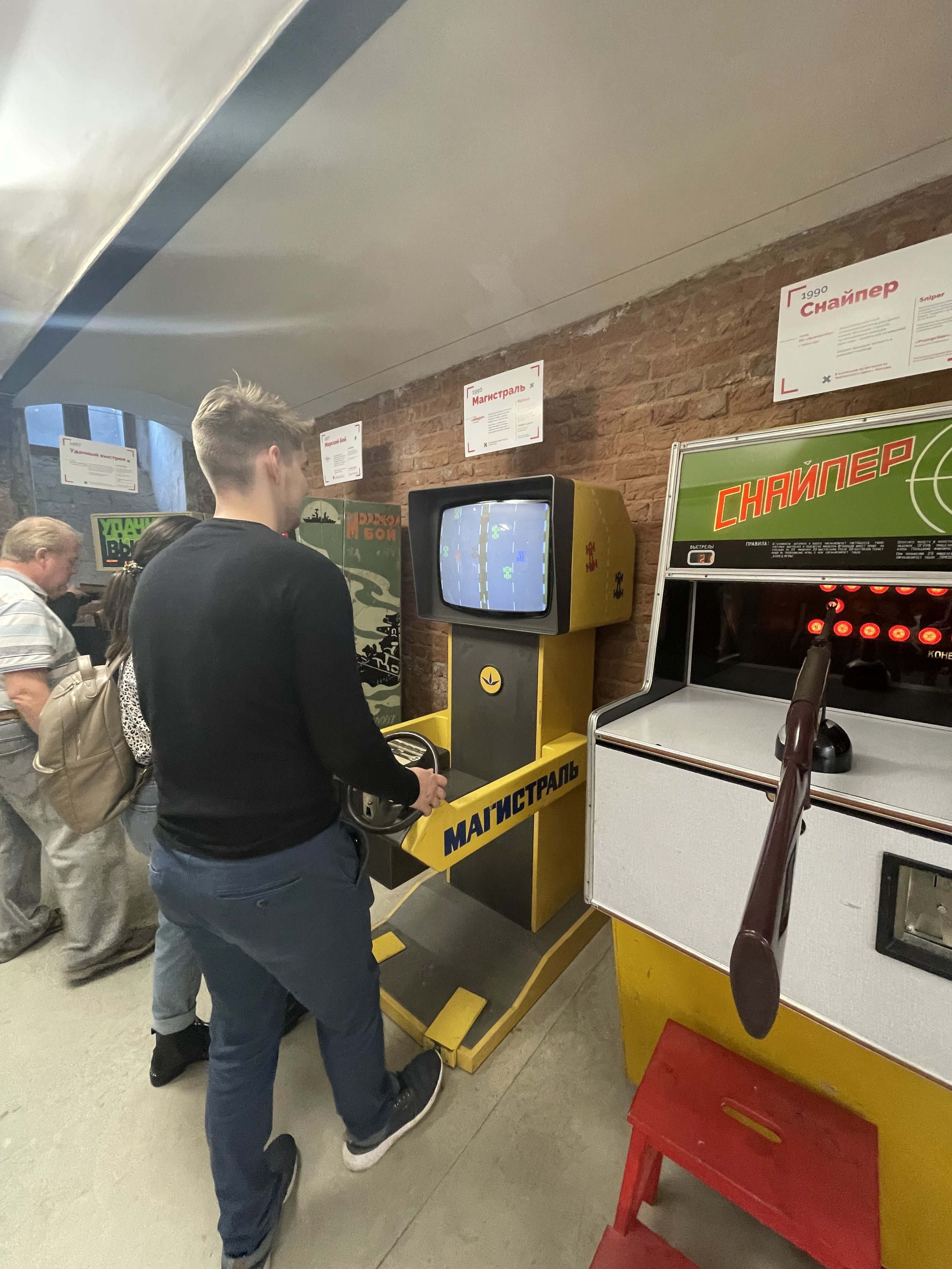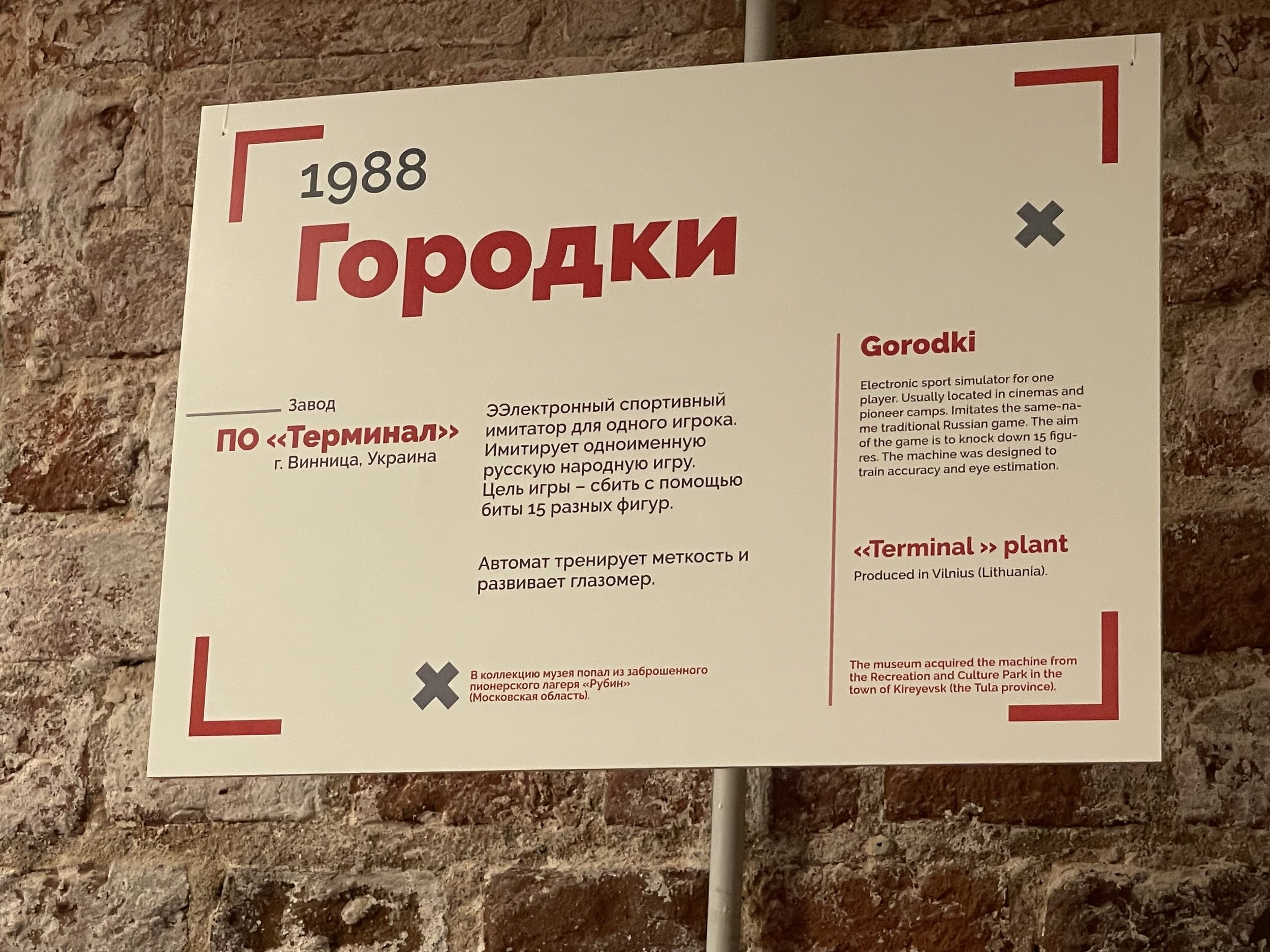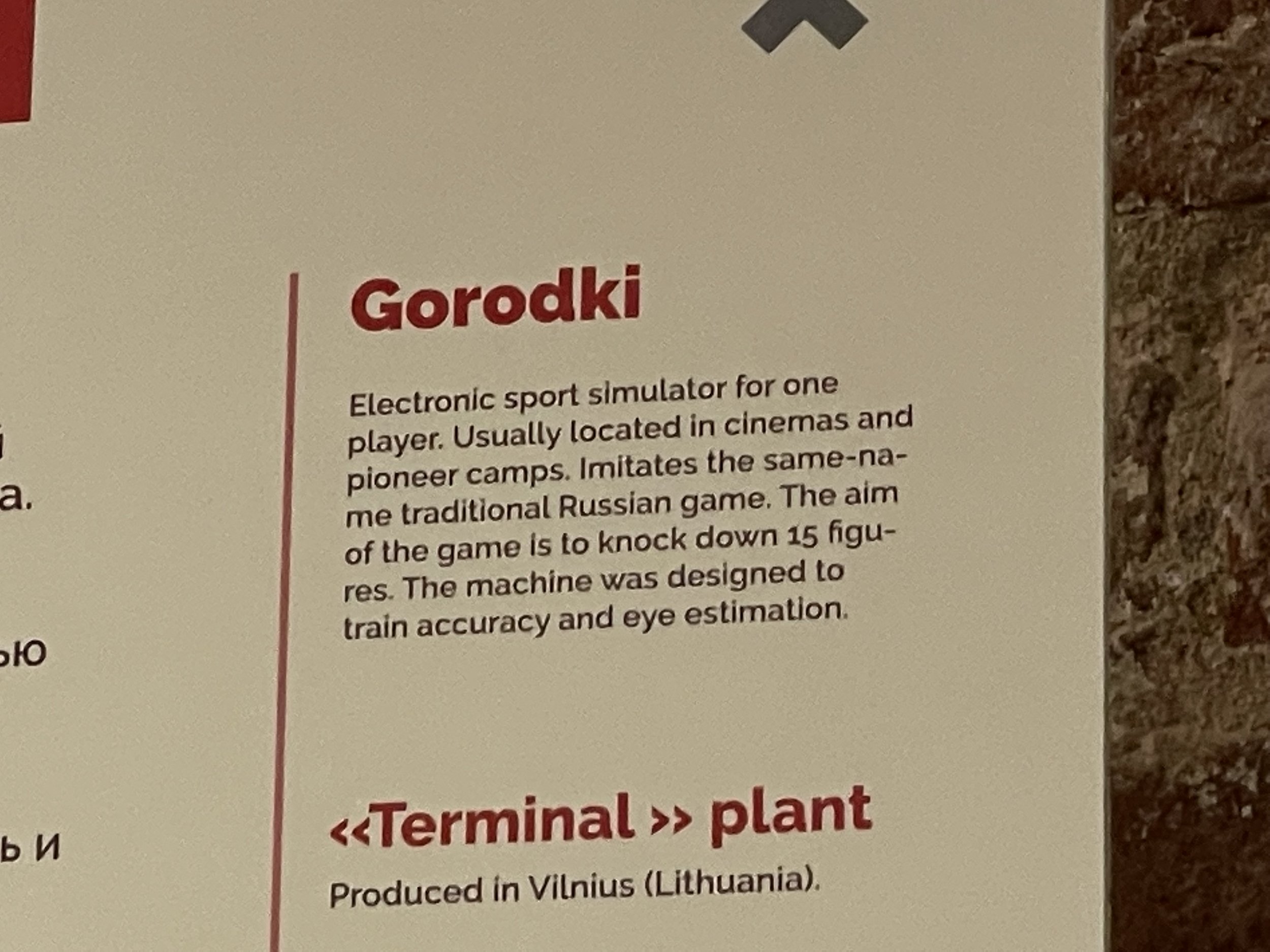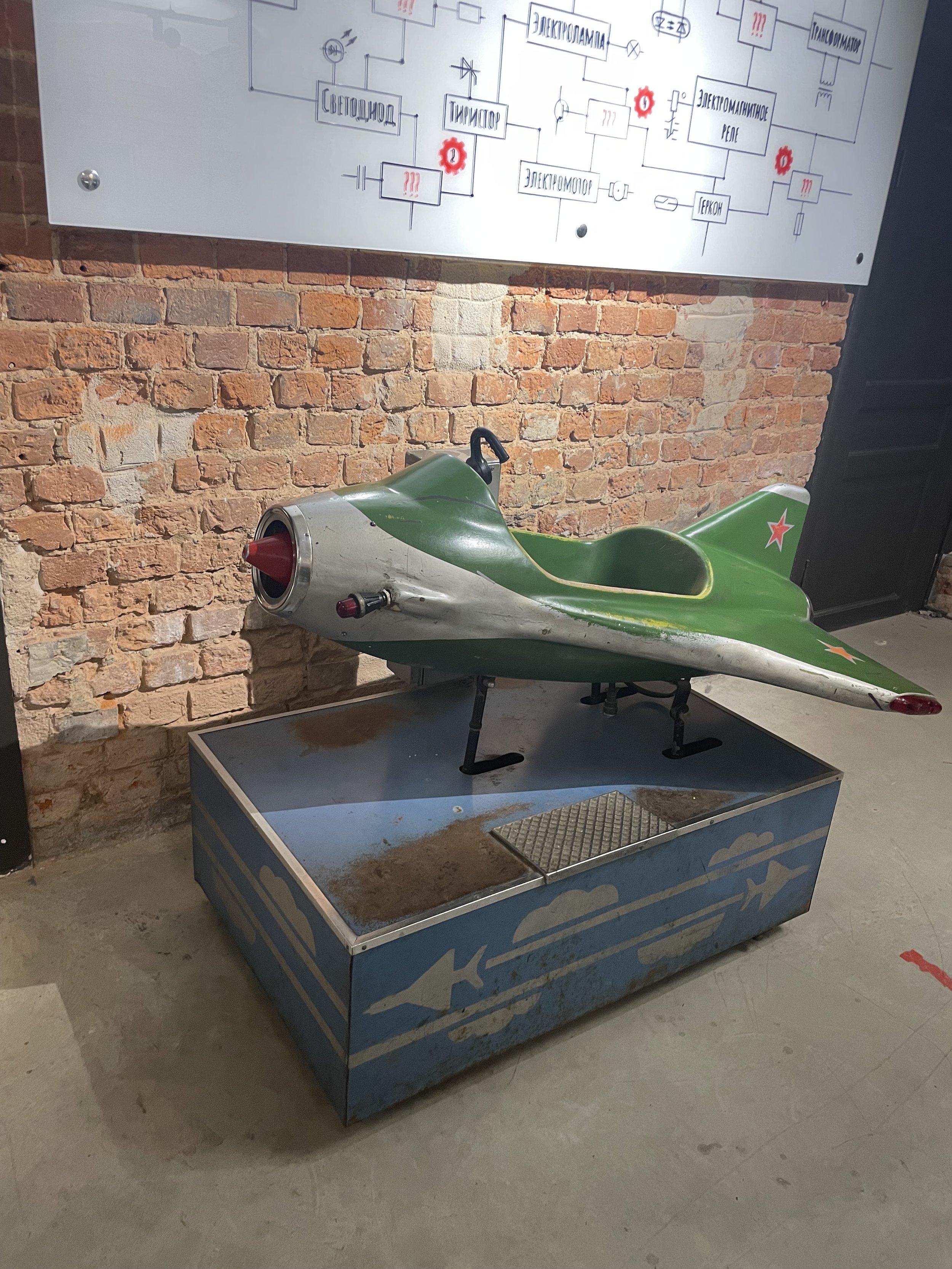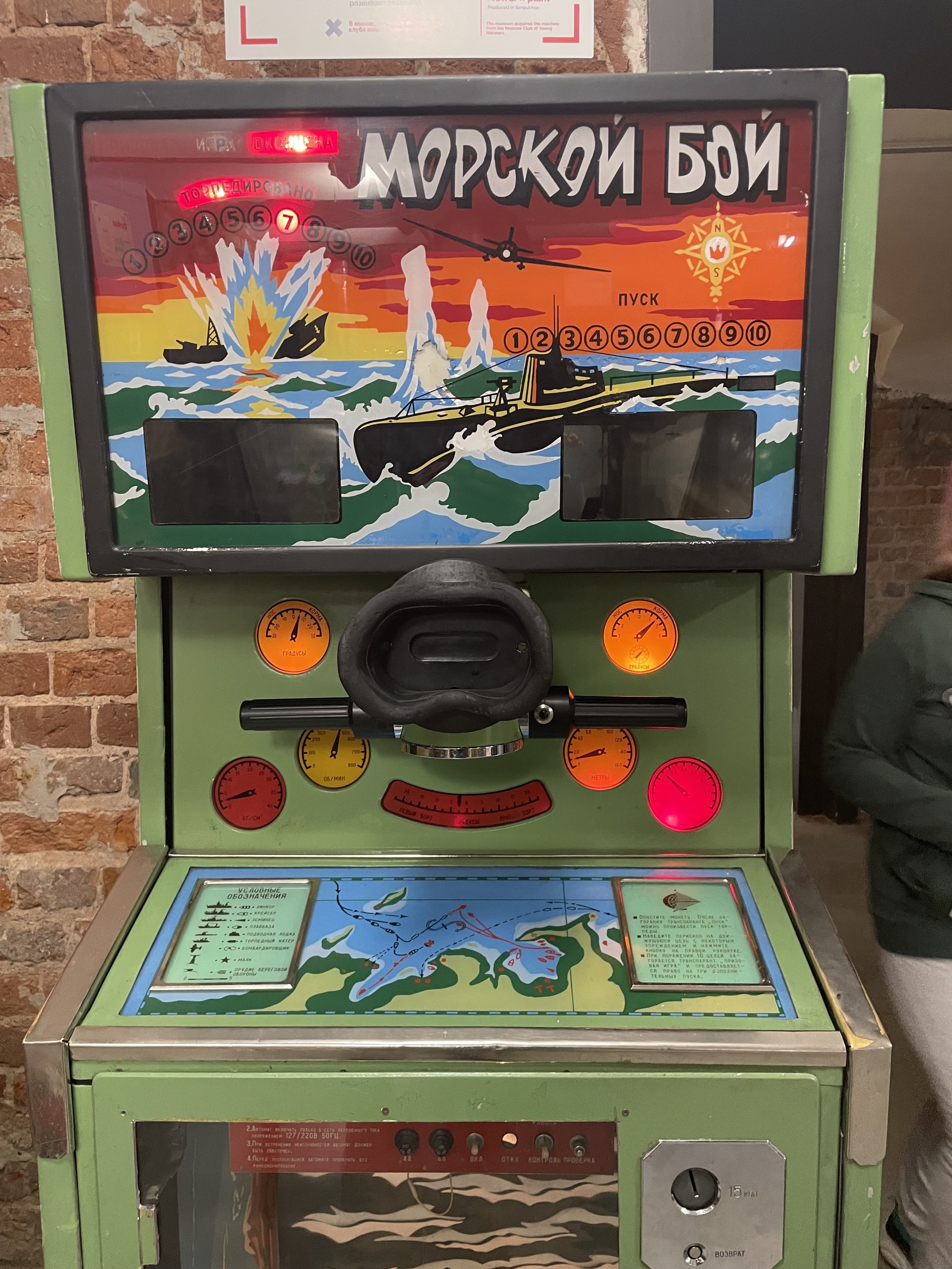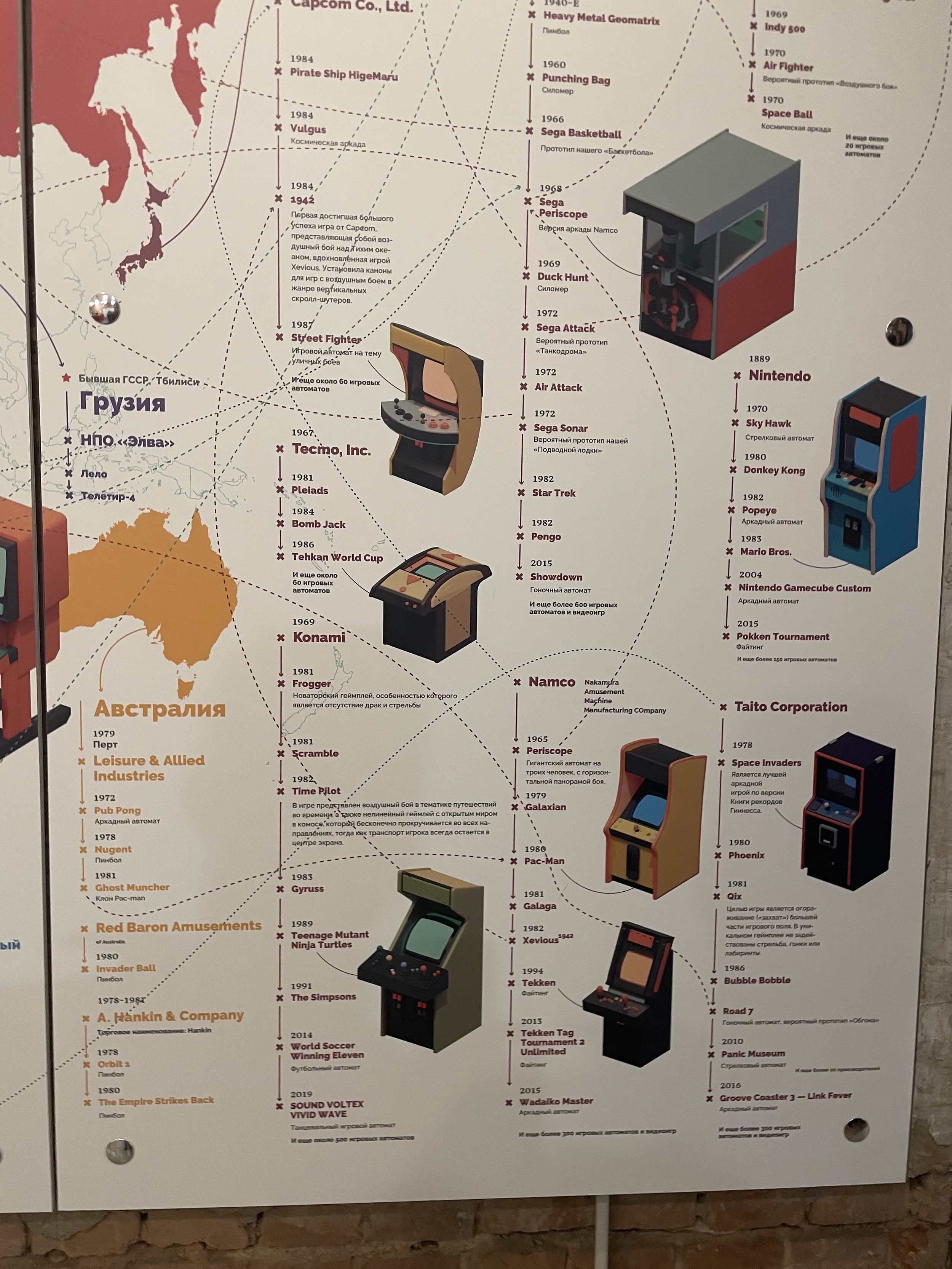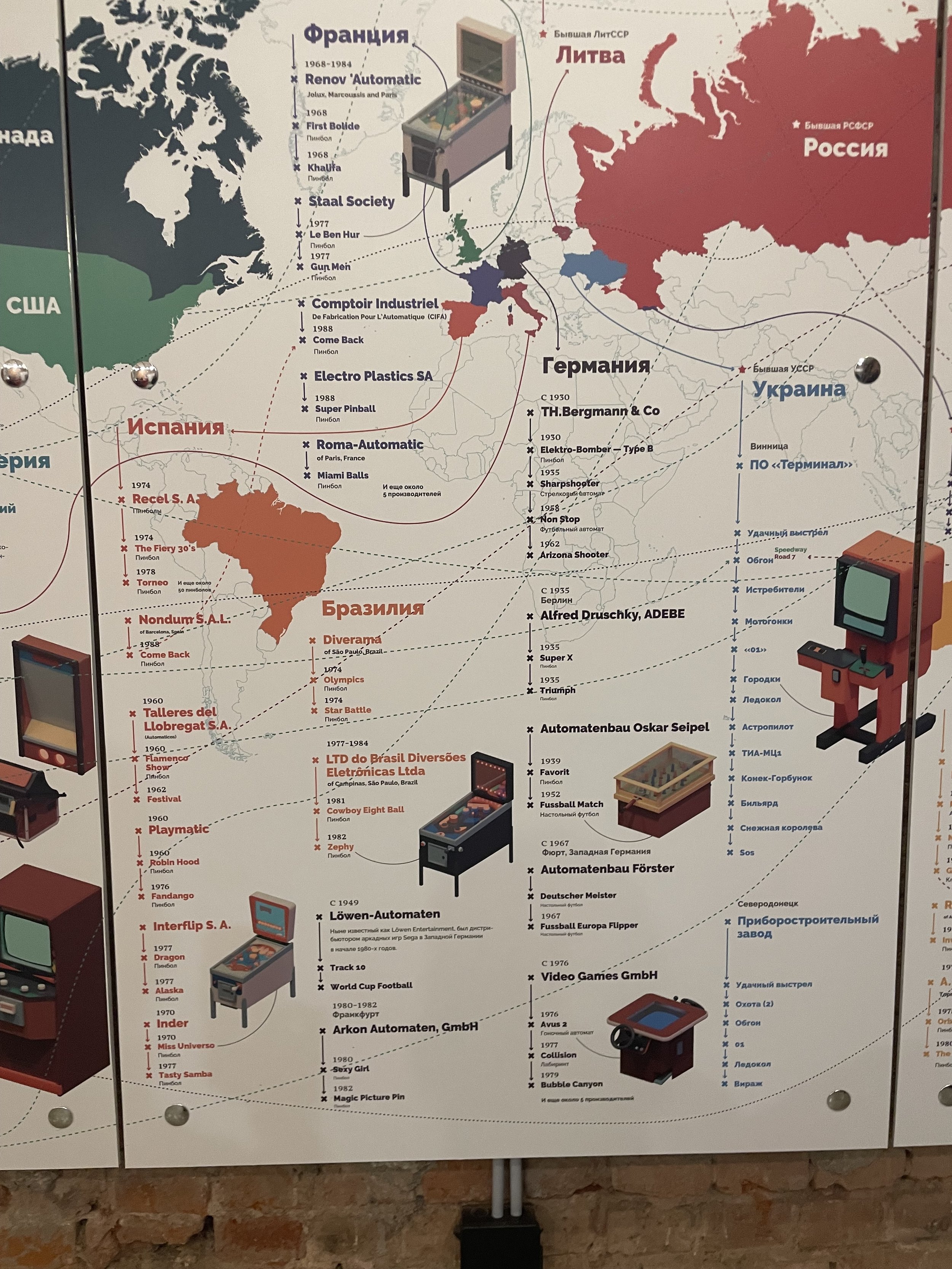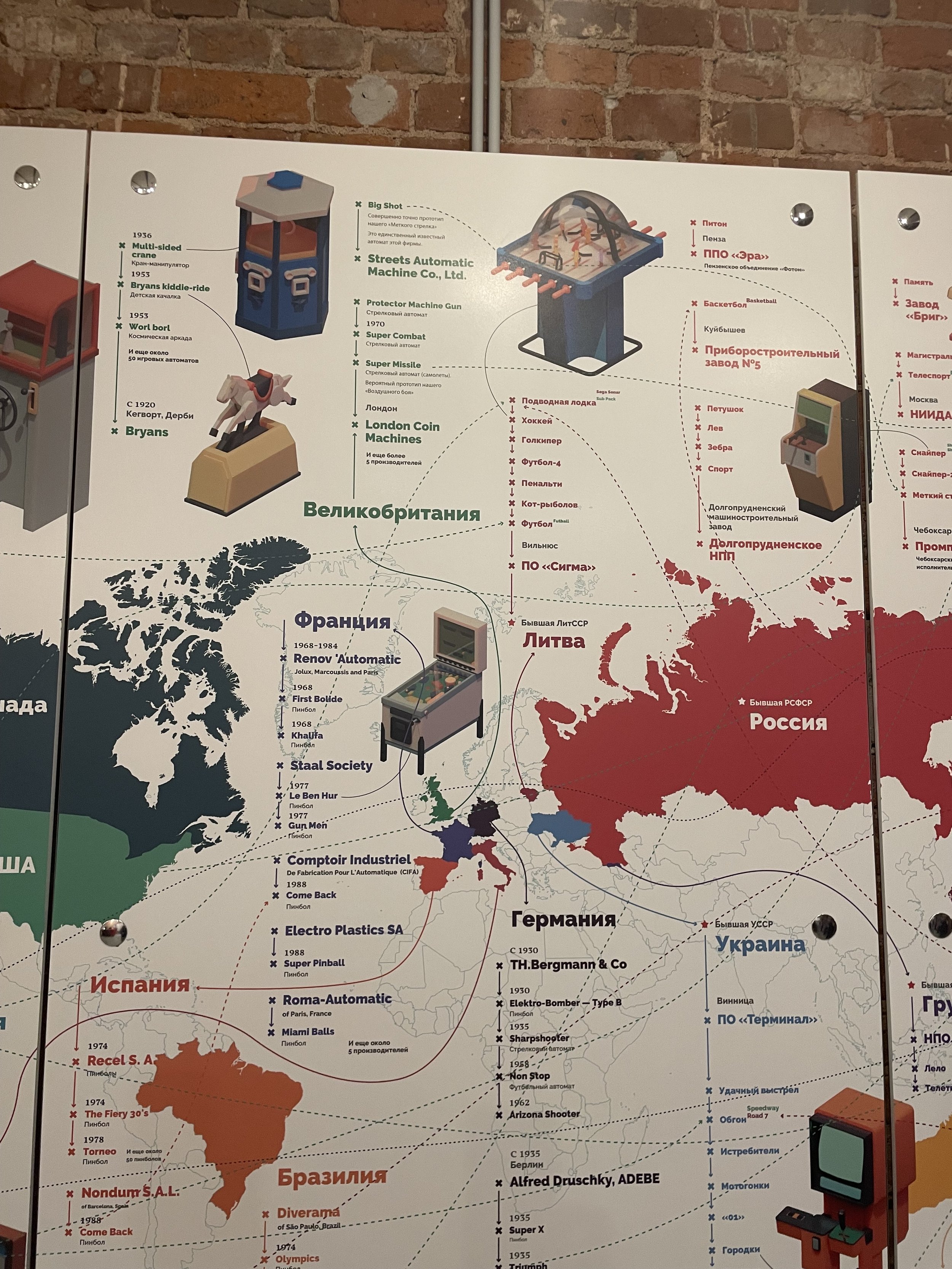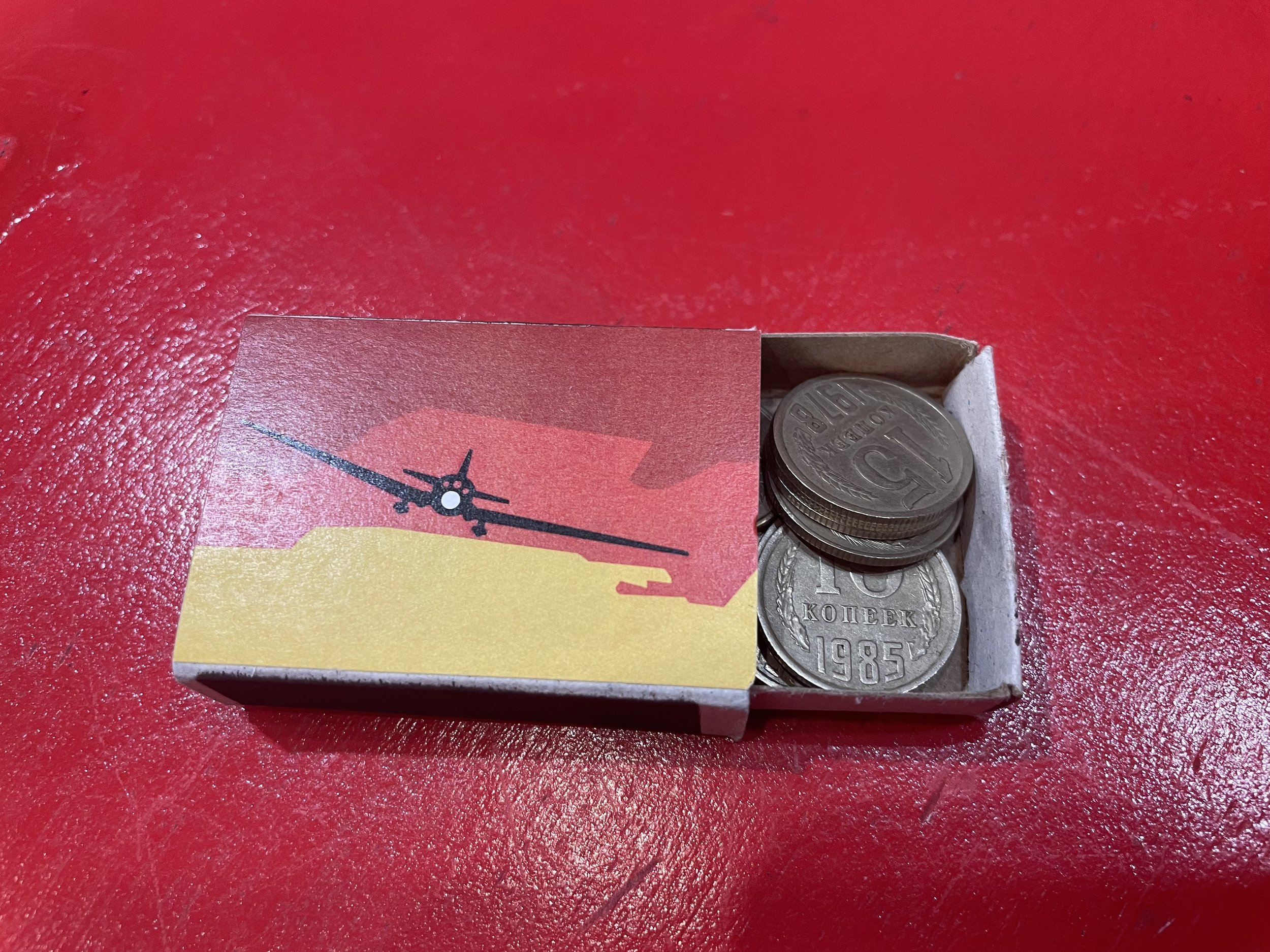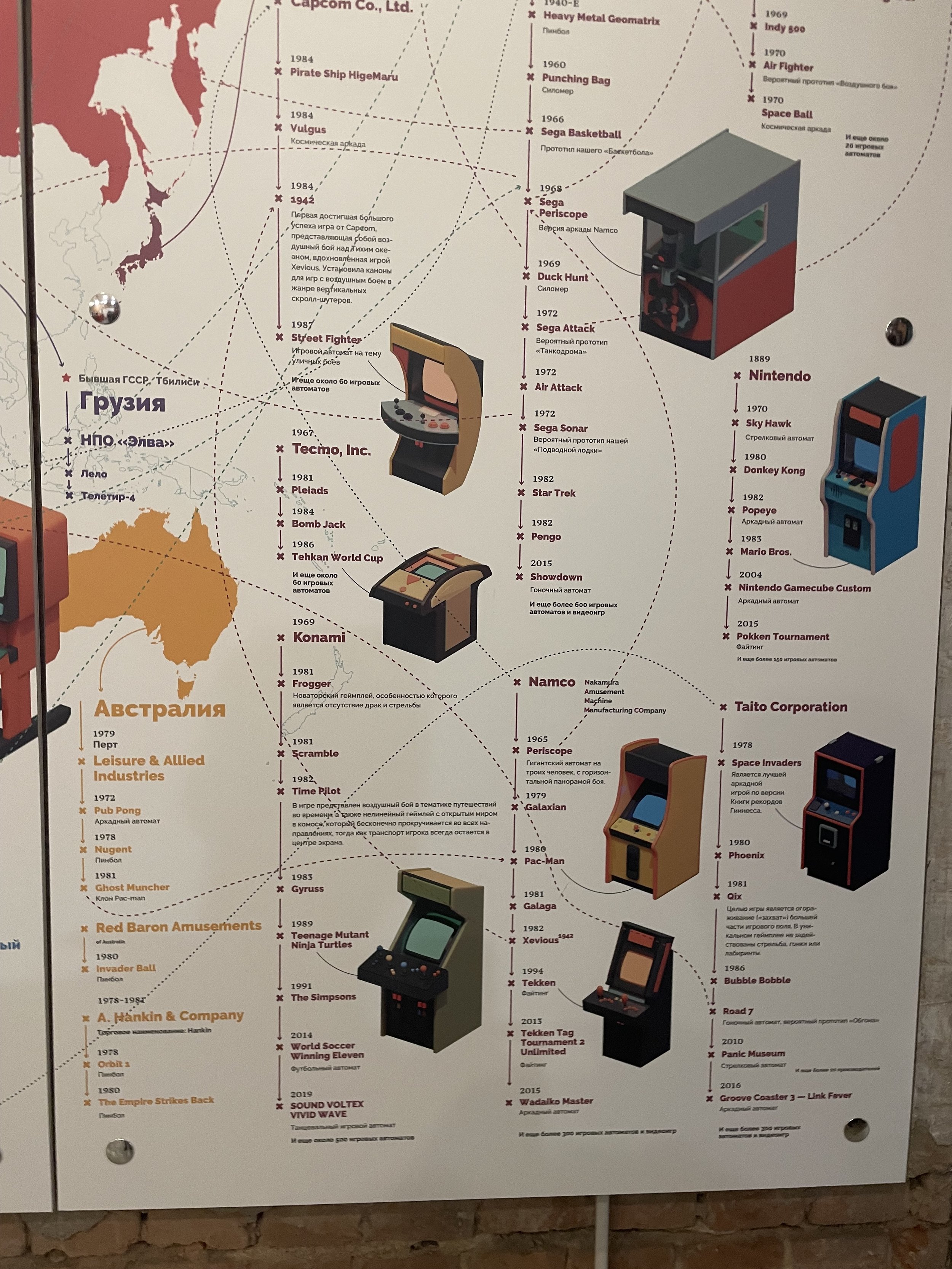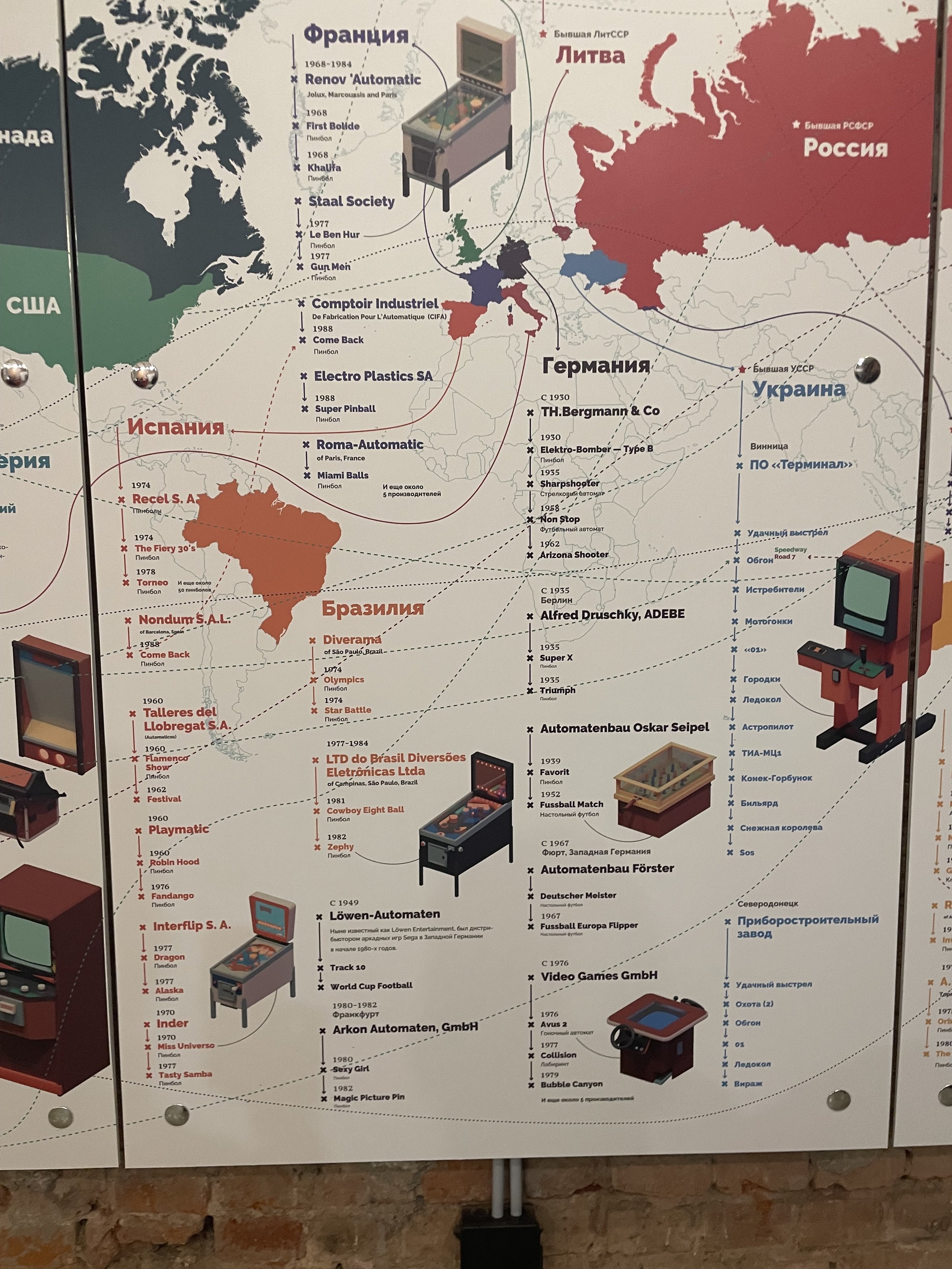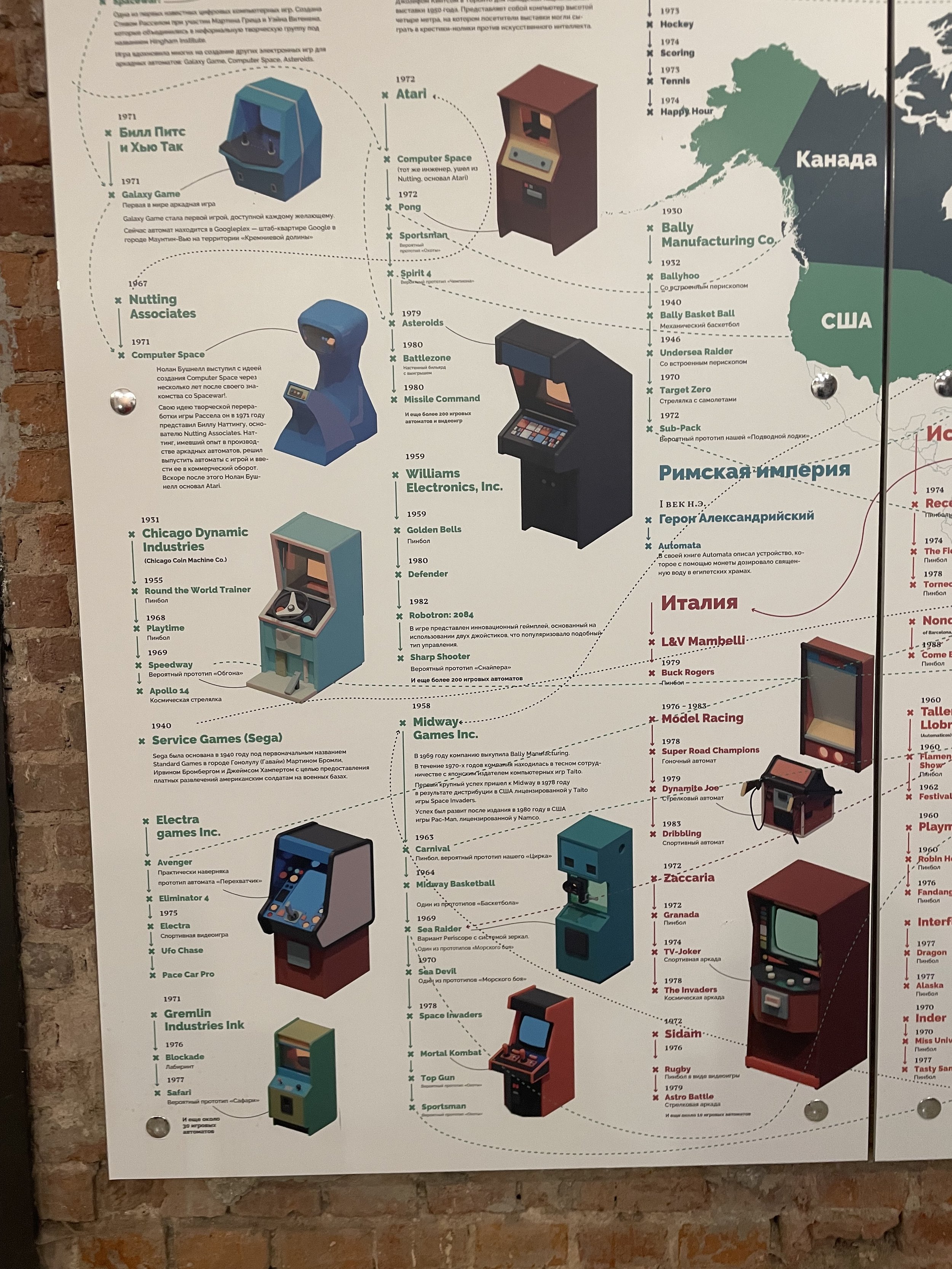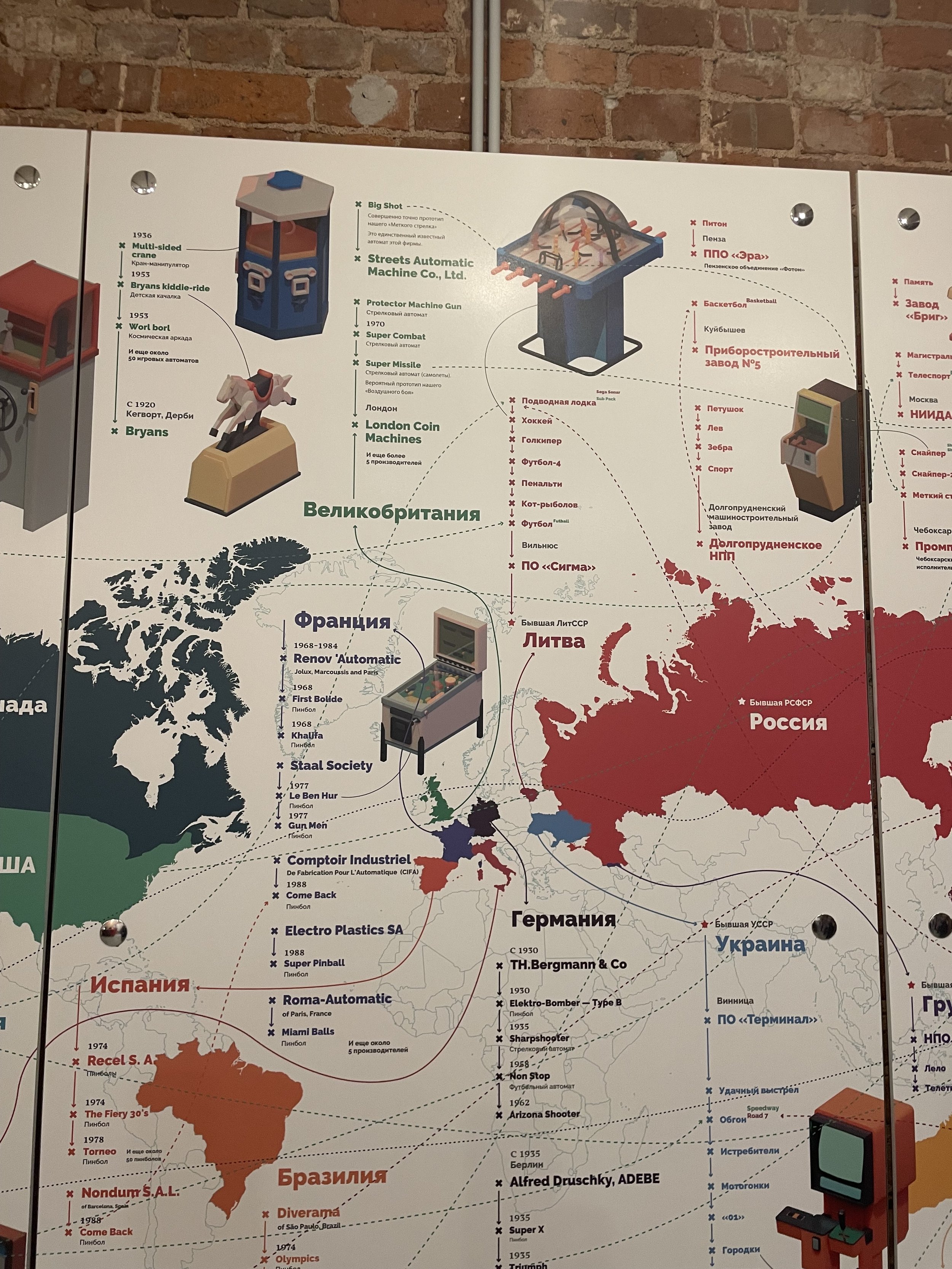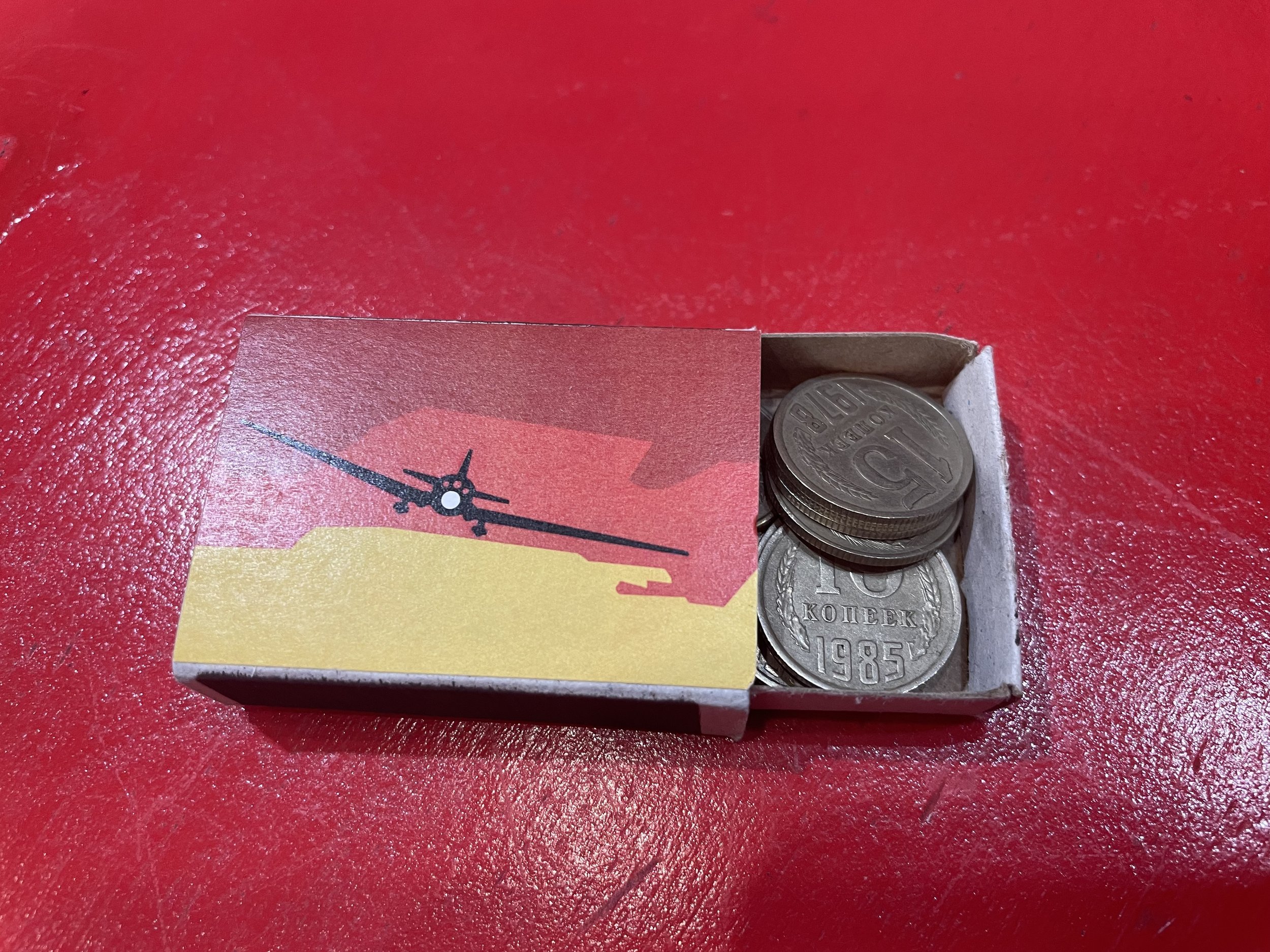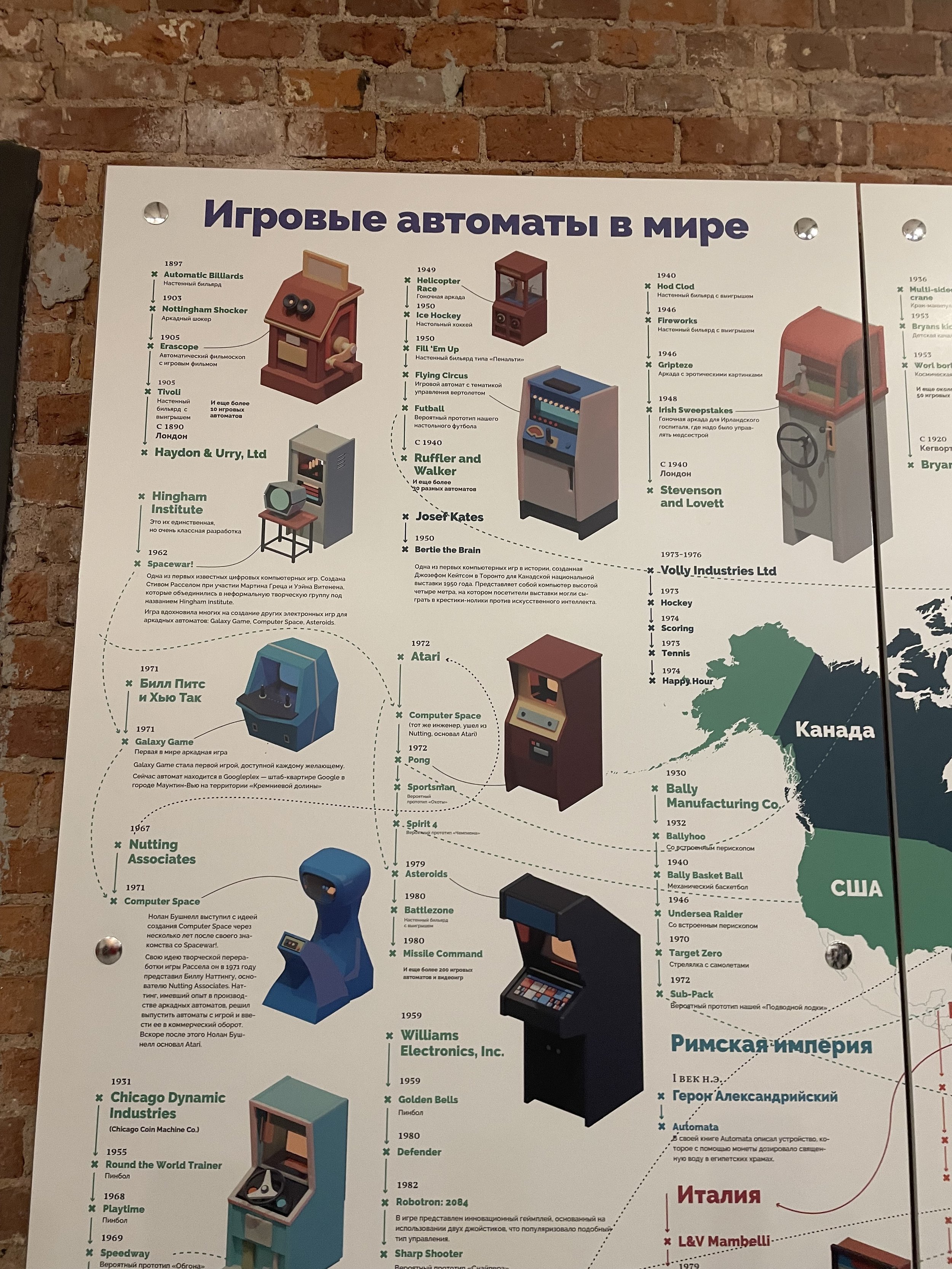Plus Episode 1: Bunker 42 - A Tomb for the Cold War
We start our subscriber-only episodes with a mini-series, the Secrets of the Soviets. In episode 1, we share the story of Stalin’s cold war bunker in Moscow.
Audio is only available to subscribers to My Dark Path Plus
Other My Dark Path Plus episodes you might be interested in
Plus Episode 3:
In Episode 42, I explored how the Soviet government actively supressed the reporting and reserach of UFO reports. But in this Plus episode, I share some of the most famous Soviet UFO cases, including the Soviet Roswell in Dalnegorsk.
Full Script
This is the My Dark Path podcast with a subscriber-only episode!
Let me put a question in your mind – consider it a thought experiment, a variation on the classic: “Which came first – the chicken or the egg?” Let’s apply the same idea to a nation which is in danger of sliding away from freedom. Which comes first – a dictatorship or a dictator? Is it possible for a single, domineering personality to wipe away the structures of government and society which protect the life and liberty of its citizens? Or would these historical leaders whose names become infamous, like Hitler and Pol Pot, have lived quiet and obscure lives without the support of a mass movement which was already turning in a murderous direction?
It's a question that’s haunted me for a long time, and which hovered around my thoughts as we’ve produced episodes of this podcast about World War II, or the relationship between China and Taiwan, or the dictatorship in North Korea.
One of the hardest lessons which the human race has learned is that the most powerful governments in the 20th century to embrace the economic system of communism transformed into genocidal dictatorships. The Chinese dictator Mao Zedong summed it up with more brutal clarity than I ever could: ‘"When there is not enough to eat people starve to death,” he said, “It is better to let half of the people die so that the other half can eat their fill." And under that philosophy, during the Great Famine, so many millions of Chinese people died that historians are still debating whether they died from natural shortages, or whether mass death by starvation was deliberate government policy.
Now you might think – wait a minute, that doesn’t sound like communism. Wasn’t communism supposed to mean that there are no winners and losers, that everyone shares equally? Well, as the old saying goes, power corrupts, and absolute power corrupts absolutely; and a government with absolute power to seize everything, inevitably, cares more about that power than its people. So it went in China, so it goes now in North Korea; and so it was in the Soviet Union.
I grew up during the Cold War, as America and the Soviet Union competed for influence around the world, nuclear missiles aimed warily at one another – the threat always hovering that World War III could start any given day, with annihilation and nuclear winter following. That’s probably why I was prepared to have a lifelong fascination with that former communist Empire; and that interest was cemented when I took a high school trip there in the summer of 1987.
It's shocking to me, and more than a little sad, that as we work on this episode, contemporary Russia is behaving like the Soviet Union of old – invading and brutally assaulting its neighbors in a quest for expanding power and influence on the world stage. That threats of nuclear strikes are once again in our regular conversations. We live in hope that the lessons of the past will prevent or even reduce future suffering. But we’re facing dark times as the people of Ukraine fight for their right to exist, with the free world in their corner.
We work hard to keep this podcast apolitical – our focus is on the history and the science and the stories behind them. But if you haven’t noticed, this is a personal passion of mine – my belief that governments exist because individuals grant them the right to exist. “Evil” is a heavy word, and maybe we can throw it around too casually. But when we take a look at the record of these communist dictatorships – where the government exercised the power to take anything and everything it deemed necessary, then gave itself the might to crush any resistance from its people, any movement to replace its corrupted rulers – I’m not sure what other word we’re supposed to use. While we might call out governments and systems of thought as wrong, we are also reminded of one of the great commandments…to love thy neighbor as thyself. In this world, that’s a tall challenge, but one we must take on.
The Cold War was a war of secrets and paranoia; of guesses and gamesmanship. America spent decades with the Soviet Union as its chief fixation, its chief threat; while simultaneously knowing very little about what was happening behind the so-called Iron Curtain. It was only after that some of the most fascinating stories emerged of what they were doing to prepare for us. The history is still being written, and that excites my curiosity.
A few months ago, I had a trip coming to Moscow, and I made it my goal to come back with a special subject for this show to cover. But what I saw and experienced in just those few days showed me that a regular episode or two wasn’t going to be sufficient. To do these stories justice, we had to do something special.
And that’s the purpose of this miniseries. We wanted to cover everything that this show is about – the history, science, and the paranormal, but focused on the Soviet Union during the Cold War era. These are some of the strange and curious tales that might have fascinated someone just like me, growing up on the other side of this global conflict.
It all starts with a literal dark path – as I descended the stairway deep into the bowels of one of the most haunting places I’ve ever visited – Moscow’s Bunker 42.
***
Hi, I’m MF Thomas and welcome to episode 1 of the Explorers’ Society from the My Dark Path podcast. These are exclusive episodes produced only for subscribers. One of my favorite outcomes of making this podcast has been connecting with a community of listeners who, like us, revel in the stories we share about history, science and the paranormal. You are who we do this for; and so we’re proud to go the extra mile and create these bonus episodes to show our appreciation for you subscription. I’d like to thank Eliza and Brad who were our first Patreon subscribers! We are grateful for you.
We’re starting the Explorers’ Society with a series of episodes focused on the Cold War Soviet Union, which is a rich source of stories you might not have learned about in school. Think of this as a private tour along a dark path I’ve walked during multiple trips to Russia and former Soviet Republics going back many years. Thank you for making this show possible with your enthusiasm and support. As we explore the fringes of history, science and the paranormal at My Dark Path, we’ll go even further for the dear members of our Explorers’ Society. Let’s get underway with our first Patreon episode – Bunker 42 – A Tomb For the Cold War.
***
PART ONE
My trip to Moscow was almost over before it began. My original ticket was canceled, and only with some last-minute scrambling was I able to board a flight on the Russian airline Aeroflot. It was a comfortable, modern Boeing 777, and the 11-hour trip gave me time to reflect on the rickety planes we all rode in during that original trip I took as a teenager.
Moscow is one of the largest cities in the world; its metropolitan population almost neck-and-neck with that of New York City. But it dates back centuries further than the Big Apple, to the extent that even its name is something of a linguistic mystery. The theory is that the name refers to the Moskva River which runs through it – the problem is, we can’t trace how that River got its name, either. It’s centuries older than Russia itself, dating back to at least the 12th century and probably further. In fact, before Ivan IV declared himself the Tsar of Russia, the area over which he ruled was known as the Duchy of Moscow.
When you picture Moscow in your mind’s eye, you might imagine military parades in Red Square, or those brilliantly-distinctive onion-shaped domes which top St. Basil’s Cathedral or the Kremlin. But when the Kremlin was rebuilt in the 15th century, it was with the help of Italian architects. Skyscrapers known as the Seven Sisters represent a distinctly Russian interpretation of the Gothic towers of New York. This city is so much more than Western media often shows - a true crossroads of history, reflected in this astounding diversity of buildings and places. It’s also got more parks than any other megacity on Earth, more than triple the green space of Paris. It can be a truly beautiful and unique place to visit.
Which made it all the more ironic when a taxi dropped me off at the address I’d requested in the Taganski district, leaving me standing in front of a bland-looking, three-story wall that stretched far away in both directions. The color was light and faded, only interrupted by the occasional window. There was no joy here, no flair or imagination, just brutal scale and scope. Briefly, I wondered if I had the wrong address. This didn’t look like a portal into history – it looked like a holding area for a sprawling bureaucracy, efficient and spiritually dead.
Of course, this proved that the building’s design was working exactly as intended. Because the best way to hide something interesting in plain sight is to make it look unendurably boring. And what’s concealed by this dull facade is something more than interesting - a mammoth creation of one dictator’s paranoia and megalomania; a strange and singular achievement of design and construction which could only exist because people believed the end of civilization might be upon us.
Bunker 42 was Joseph Stalin’s backup plan, the refuge for himself and his government in the event of nuclear war. His way of ensuring that his inner circle would be protected even as the Soviet people were annihilated. The location was chosen because it was just a short trip from the Kremlin. It’s an underground city, plunging twenty stories into the Earth like an inverted skyscraper; a secret shelter whose audacious scale seems to have inspired the authors of speculative fiction like Wool, The Hunger Games, and Metro 2033.
Planning for a World War wasn’t an exclusively Soviet preoccupation at all. Every U.S. Presidential administration since Truman has engaged in planning for how to keep the government functioning in a nuclear strike. Bureaucracy has a way of reducing almost any concept to an absurdly dry technical term - in this case, America’s contingency plans are referred to as COOP - Continuity of Operations. Our Coop planning spans from hardened underground command sites like Cheyenne Mountain in Colorado, Site R in Pennsylvania, the Mount Weather Emergency Operations Center in Virginia, and mobile command posts in the air and on the sea.
The difference in both design and execution of these initiatives in America and the Soviet Union tells us a lot about the difference between these two nations during the Cold War. So let’s go back to the end of World War II, when the first atomic bombs fell, the Axis powers surrendered, and the stage was set for the next global conflict; between two superpowers who had just finished being Allies.
***
It seems like such a head-spinning contradiction now, to look back on America’s partnership with the Soviet Union against Germany, Japan, and Italy. To see American media of the time describing Joseph Stalin with the cuddly nickname “Uncle Joe”. It is doubtful that the Nazis could have been defeated without the contributions of the Soviet Union - as just one example, Hitler’s catastrophic choice to break their non-aggression pact and invade chewed up German soldiers by the hundreds of thousands, leaving the Nazis depleted and undersupplied when the time came for the Allies to liberate Europe.
Leaders on both sides already knew that the alliance would not last after the war. The Soviet Union had aggressive plans to expand its influence throughout Eastern Europe, while America was committed to rebuilding and supporting democratic governments in Western Europe. But the real scope and danger of this conflict took shape when Stalin got access to the atomic bomb.
Soviet nuclear research was ongoing throughout the War - it was edgy technology with many potential applications. But Soviet scientists simply weren’t making enough progress on their own; not producing enough results to justify further investment. The Soviet Military had more urgent priorities. But they had active spy rings in America which had actually infiltrated the Manhattan Project, our own nuclear weapons program. When America dropped atomic bombs on Hiroshima and Nagasaki in Japan, the Soviet Politburo urgently took control of the program, re-organized it under new leadership, and provided a crucial shortcut to hasten their research: actual working blueprints of America’s atomic bomb, acquired though their spies. With these stolen plans, as well as German scientists they coerced or kidnapped, the new Soviet nuclear program was able to skip years’ worth of testing and trial and error. They conducted their first successful test detonation in August of 1949. America code-named the detonated device “Joe 1”. The world now had two nuclear powers.
For decades after, America and the Soviet Union avoided direct military conflict, competing for influence in proxy wars and political gamesmanship. But all the while, the nuclear stockpiles were growing, their range and devastating power increasing by leaps. Which meant that both governments needed to strategize how to protect themselves in the event of a surprise nuclear assault. So join me now as we walk through the doors of Bunker 42, Stalin’s nuclear contingency.
***
PART TWO
I walked down the block to a new entrance, built in the last decade to enable visitors to experience this unique location. Once I’d checked in, the experience started - I passed through a blast door that is a couple of feet thick. All I could think of to compare it to was a massive bank vault - a place to keep valuables safe. But with a bank vault, you don’t find yourself imagining what it would be like to be sealed inside. I tried to imagine what it would be like to pass this barrier during an actual war - to feel as though I was going to be safe, but to also know that if this door ever opened again, I might not recognize the world outside. In many ways, it was the inverse of a tomb, one that would hold the living while the modern world died.
And like a tomb, it extended underground, 210 feet deep. As deep as many of the metro stations in Moscow - and there’s a reason for this we’ll get into. Covering over 75,000 square feet, it was capable of housing up to 3,000 people for 90 days without any support from the outside world. It was stocked with food, fuel, and water, and had its own diesel generators and internal air purification system.
Almost immediately past the blast doors, I started down a narrow staircase. It was so narrow that you would need to turn sideways if someone else had to squeeze by. This was not the friendly, inviting tourist experience you’d get at a Disney park; there weren’t friendly hosts peppering the journey with entertaining anecdotes, and nobody was pointing out emergency exits. Phrases like that have a different meaning in a space like this. But to me it was a more accurate experience, that strange mixture of what you might call ominous banality. Even without a war to endure, 150 Soviet soldiers worked here full time, preparing and maintaining it for Armageddon. This dull, narrow staircase was just part of their workspace; the primary path into and out of the bunker.
I’ve been in a lot of government buildings in a lot of countries, and one detail that becomes strangely familiar is a particular sickly green shade of paint. Someday we’ll have to study why this shade is so appealing to government buyers. But even here, in the most secret of secret government facilities, the walls wrapping the staircase were once again coated in that subtly nauseating color. It was one of the few details that I could find some humor in.
The steps were shallow, worn smooth. I imagined countless feet treading up and down the many floors of the complex. I mentioned Hugh Downey’s landmark novel Wool, and some of the opening text came to mind. In the 100-story silo he imagines, quote:
“centuries of bare palms and shuffling feet could wear down solid steel….Each step was slightly bowed from generations of traffic.”
Those soldiers and technicians - many days they would have walked. Maybe sometimes there was a drill and they had to run. I wasn’t going to risk my body to have that experience. Joseph Stalin didn’t live long enough to see this ambitious facility completed. But in my mind’s eye I pictured him nonetheless, waiting for us at the bottom of the stairs. Judging our efficiency and loyalty as soldiers of the Motherland. Under his rule, many millions didn’t live up to his paranoid, ever-changing standards, and paid for it with their lives.
***
During the Cold War, America only knew bits and pieces of what daily life was like for ordinary citizens in Stalin’s Soviet Union. We know a lot more now, and it confirms many of our worst suspicions. Stalin ruled through fear and anger, and his enemies were everywhere, whether it was Americans and their allies, or traitors and saboteurs that could be anywhere. Maybe even right next door to you.
All the major media outlets - newspapers and radio stations - were directly controlled by the government, and they would regularly announce the names of citizens who were charged with espionage, sabotage and anti-Soviet behavior. Victims were arrested, tortured, then either shot or sent to the concentration camps known as Gulags. Evidence and the law didn’t matter - hatred and suspicion were enough.
I can’t help but notice the parallels with the European witch hunts from the 14th to 17th century, as well as those which took place in New England before the American Revolution. You can hear our episode about the Witch Trials before Salem in Episode 23. We don’t pretend on this show that America or our ancestors have immaculate records. I can personally love my country while respecting the real history of its faults. When George Orwell wrote 1984, the totalitarian state he described, defined by suspicion and propaganda and brainwashing, bore a strong resemblance to Nazi Germany or the Stalinist USSR; but he never named those two countries, because his point was that this potential for this kind of evil was in all of us. Under the right, tragic alignment of circumstances, it could happen here.
During the Cold War, citizens could sometims see black automobiles rolling down city streets. These cars had an ominous nickname - Chornaya Vorona, the Black Raven. These were government vehicles, driven by members of the Soviet secret police. They often pulled up in the middle of the night to make arrests. Some people would make the sign of the cross when they saw a black car drive by.
It’s not as though this evil only began after World War II. The Great Purge, in which Stalin ordered over a million Soviet citizens imprisoned, and at least 700,000 of them executed, happened throughout the 1930’s. Before the Communists seized power under the leadership of Vladimir Lenin, Stalin had raised money for Lenin’s movement in ways that might be familiar to the American mobsters we’ve covered on this podcast - protection schemes, theft, and kidnapping. Aggression and brutality were his methods from the very beginning. His paranoia was so extreme that there are stories of stamp collectors being executed for valuing foreign stamps more highly than new Soviet stamps featuring Stalin’s face.
His distrust extended to his own Army. The Red Army had been organized and staffed by Leon Trotsky, one of Stalin’s strongest rivals. And, throughout the 1920’s, they had shared resources and training with the German Army, with Soviet officers continuing to travel there even as the Nazis accumulated power. Stalin was obsessed with rooting out disloyalty within its ranks. The overall commander was Marshal Mikhail Tukhachesky, Tuk-ha-chef-sky whose reputation was that of a fiercely dedicated soldier, an advocate for military professionalism, as well as a brilliant tactical thinker when it came to the new technology of armored warfare.
But it was this very esteem and independence that Stalin could not abide - he didn’t want loyalty to ideals, he wanted loyalty to himself. Marshal Tukachevsky also had a personal feud with one of Stalin’s closest allies, Marshal Semyon Budenny.
The Great Purge had already reached into the ranks of the Army. An army commander based in Kiev, Dmitri Shmidt, was a known Trotsky loyalist, and was overheard saying that he wanted to cut off Stalin’s ears with his sword. He was arrested, confessed to plotting an assassination, and was shot in the back of the head. Many more officers would follow him.
Stalin summarized all this murderous activity simply: “These men are puppets in the hand of the German Army.”
In fairness to history, before the non-aggression pact between the two nations, we do have ample evidence that the Nazis, led by their chief propagandist Heinrich Himmler, were actively working to sabotage the Red Army, sowing discord using forged documents and other disinformation techniques. Passing these fake documents through the President of what was then Czechoslovakia, they actively worked to make Stalin believe that his best commander, Marshal Tukhacevsky, was plotting against him.
We’ll never know if Stalin needed the encouragement. But we do know what he did.
On May Day, 1937, an annual parade was taking place in Moscow. Marshal Tukhacevsky went to Lenin’s Tomb, the traditional place for Soviet leaders to view the parade. But his access was blocked - imagine showing up for work and discovering your office keycard doesn’t work anymore. This was much worse than unemployment, though. Ten days later, he was officially demoted, sent to command a regional military district.
Then, on May 22, Stalin recalled him to Moscow. When the former Red Army commander arrived, he was arrested, thrown into Lubyanka Prison along with seven other generals. After two days of brutal interrogation, Marshal Tukhachevsky confessed, for what it’s worth, to being a Nazi spy. Since the fall of the Soviet Union, the records of his interrogation have been uncovered. They’re sprayed with blood, visceral evidence of the horrific techniques used to break him.
And he was just one of almost 37,000 Red Army officers that we can verify were dismissed, imprisoned, or executed as a part of the Great Purge. That 37,000 includes 13 out of 15 army commanders, 11 vice-commanders of defense, 154 of 186 divisional commanders, 220 of 406 brigade commanders, half of all colonels, and over 7,000 captains. More Soviet generals and colonels were killed by Stalin in the Great Purge than were killed by the Nazis during all of World War II. And just because you escaped death didn’t mean that you were unscathed. A general who survived interrogation recalled seeing other officers in his camp, quote “on all fours, howling and rooting about; they had become semi-idiots whom no amount of beating could drive from the refuse heaps.” End quote.
Sometimes you need a morbid sense for the absurd to appreciate the extremes of this atmosphere. There’s a story of an officer who had been out of the country, returned to Moscow, and started calling up friends, looking to reconnect with people he missed. Every phone number he called was answered by a stranger; because whoever had owned that number before had disappeared. Unexpected knocks at the door could send people into a frenzy of fear. We even found a story of a general who died of a heart attack when an Army messenger knocked on his door before dawn.
A General named Alexander Gorbatov said: “With each arrest, it became more difficult to believe in the disloyalty, the sabotage, the treachery of these men.” When he protested the arrest of his boss, he was arrested himself.
In prison, fellow detained officers told him to confess to anything because, quote, “they believed it was better to stand on their false testimony to put an end as quickly as possible to the torment and to die as quickly as possible.”
Gorbatov, though, resisted; and surprisingly, he wasn’t shot, but rather sent to a gulag.
General Konstantin Rokossovsky was another example of an officer who resisted giving a false confession. Interrogators broke three ribs and knocked out eight teeth. He was brought before a court, and told that another officer named Yushkevich had given him up as a German Spy.
Rokossovsky scoffed: “Can the dead give evidence?”
The court officer asked: “What do you mean the dead?”
Rokossovsky responded, “Well, Adolf Yushkevich was killed in 1920 at Perekop.”
Astonishingly, this particular court searched the military records and admitted that Rokossovsky was correct. And he was acquitted. Then he was sent to a gulag in Siberia. I said you’d need morbid humor to process some of this.
This purge of military expertise had the expected impact when the Soviet Union invaded Finland at the beginning of World War II. The Winter War of 1939-40 is legendary in military history not just for the brutality of the fighting, but in the way that Finland, with a population of just 3.7 million citizens, stalled the million-strong Soviet invasion force and inflicted massive casualties on them.
The future Soviet leader Nikita Khrushchev remembers Stalin’s reaction. Stalin was furious with the military and with general Voroshilov vor-o-shil-ov —justifiably in my opinion. Stalin jumped up in a rage and started to berate Voroshilov. Voroshilov was also boiling mad. He leaped up, turned red, and hurled Stalin’s accusations back in his face: Voroshilov yelled: ‘You have yourself to blame for all this! You’re the one who had our best generals killed!’
Although he would never admit the error of his ways; Stalin brought 13,000 officers back from imprisonment and exile. Among them was Konstantin Rokossovsky, the General who resisted interrogation and proved his innocence. Stalin saw Rokossovsky after his return from torture and imprisonment, and said: “I don’t seem to have seen you around for some time. Where did you go?”
Rokossovsky responded: “I was arrested, Comrade Stalin. I was sitting in prison.”
The Soviet Dictator laughed. “A fine time you chose to go to prison!”
***
PART THREE
I spend this time telling stories about Stalin not to try and persuade you that he was evil; hopefully you agreed with me on that point already. But it’s important to understand the personality type that we are dealing with - paranoid, insecure, unwilling to admit error, but willing to inflict incalculable suffering and death on his own people in order to hold onto power. Because in a dictatorship, the government acts from the will of the dictator, not from the people; and Stalin’s personality is reflected in everything from these stories of ominous black cars in the streets, to the design of a facility like Bunker 42.
The 20-story staircase I descended ends in a little lobby. Shooting off in one direction is a corridor, a crudely carved tunnel made of individual sheets of thick steel. I’d guess the dimensions of the tunnel as maybe 6’x8’. The walls were painted with another government-approved color that no human being would ever approve of, a shade of red that reminded me of clotting blood. There’s also a guard’s desk - when this facility was active, it would have been staffed around the clock to ensure that only approved individuals could pass into the Bunker. To underline this point, there’s a locked cage - an armory with rifles and pistols.
Any touch of human life brought an unexpected smile to my face; maybe a feeling of relief and recognition. In the same space as this weapons cage, there’s a brightly-colored vending machine. It reminded me of the Nuka-Cola machine from the Fallout game series. This one sells sparkling water - I’ve put a picture on our website.
Even this machine leads down a historical corridor. Sparkling water had a long history in the Soviet Union. The first vending machine to sell it debuted in a dining room in a government office in St. Petersburg on April 16, 1937. Soon after, other machines spread throughout Moscow, offering carbonated water for one kopeck, sparkling lemonade for three. But if you have an American image of vending machines, you’d be surprised to find that your beverage wouldn’t come in a bottle or an aluminum can. It would come in a glass, which you were expected to rinse after drinking, and then leave for the next customer. Efficient, but not exactly hygienic.
***
In 1995, this facility was declassified; and eventually sold to a private company. The current owners haven’t fully renovated it, I was able to explore many parts of the bunker, which has been left to decay naturally. It feels more haunting than if they had turned it into a museum.
The network of tunnels that spreads out from the base of that staircase I descended stretches about a 1/3 of a mile. Our tour group passed through dormitories for enlisted men as well as private quarters for officers, before arriving at the next unique feature. An unusual staircase zig-zagged up in front of me. I had already become so use to the spartan, bureaucratic drudge of my surroundings, but suddenly here were decorations; metal lamps lining this particular staircase. Immediately, you can tell that there’s something different.
This staircase marked the transition into Stalin’s private meeting rooms and quarters. Even 70 years on, something about this line of demarcation gave me a sense of foreboding; a stark reminder of the power he wielded over the lives of all Soviet citizens.
His quarters include a large desk and a functional bedroom. He wouldn’t be living in luxury; but if he was sleeping here, it would mean that many of his fellow Soviets wouldn’t be living at all. I’ve shared some of my pictures on the website.
Just off his private office was a large, long conference room. It had a very low ceiling, which makes sense, every square foot of space would be at a premium; but it stood out to me only because I had just come from Stalin’s quarters, where the ceilings were much more like what we consider normal. This conference room, low ceiling and all, was designed for meetings with Stalin’s military and political leadership team.
Bunker 42 was designed to offer more than just protection from nuclear annihilation. Stalin and his hand-picked fellow survivors wouldn’t just shelter here, they would have the tools to continue leading their government from underground. The facility had its own radio and telegraph station; and its own laboratory that could perform geophysical tests.
A major part of the Soviet atomic research program, taking advantage of those secrets stolen from the Manhattan Project, was learning not just how to wage nuclear war, but how to theoretically survive it. Their model for Bunker 42 was designed around estimates of the size of an atomic explosion, along with how deeply its destructive power would penetrate into the ground.
Engineers calculated that the bunker would need to be at least 165 feet under the ground in order to survive nuclear attack. The Soviet government’s planning bureau was known as Metroproekt, and it designated this massive, one-of-a-kind construction project as Object 02. Immediately they faced immense challenges - it needed to be close enough to the Kremlin that the necessary government officials could get there within minutes. But how do you dig hundreds of feet into the ground, and build a massive, hardened government facility, right in the heart of one of the world’s largest cities, and not have anyone find out that you’re doing it?
If foreign intelligence services learned the location and purpose of Object 02, that would be the end of its usefulness. And as we’ve outlined at length, Josef Stalin did not trust the citizens he ruled over. No Moscow civilians outside of the project could know that anything was going on.
The assignment was given to Alexsandr Yakovlev Kalagin, a high-ranking officer of the Engineering Corps. A construction company called SMU Mosmetrostroy had extensive experience building subway systems; it was their job to execute the plan. Imagine, in a society where fear and suspicion run this deep, needing to make sure that your most experienced specialists are also the most able to keep a secret. Every worker underwent intensive questioning, and a deep background check, before they could even be allowed to know what they would be working on. And once they started working; if their names became publicly known, they would have been executed. To this day, we don’t know who any of these laborers are. Just another irony in a government that claimed to be a worker’s paradise.
Remember how I told you that much of the bunker existed at the same depth as Moscow’s subway system? Well, this is one of the ways they were able to conceal the work from the public. Instead of excavating from above, engineers dug new tunnels off of the ones that already existed underground; connecting and reinforcing them with steel ring tubes. By 1952, the building was completed; but it took another three years to finish the compex systems for communication and environmental support. I wonder if you could make a study of how aggressive public Soviet rhetoric was towards the United States before and after this facility being ready for use.
But there was now a major flaw in the entire project; one that couldn’t be undone. Because by the time Stalin’s great, impregnable fortress was completed, he was already dead.
His health had been declining significantly since 1950. True to form, doctors who advised him to take more time away from work were imprisoned. In early 1953, after what official records call a severe cerebral hemorrage, one of history’s most prolific mass murderers spent the last three days of his life paralyzed on a couch, being fed by a spoon.
***
Bunker 42 carried on without him, though; because bureaucracy can outlive any person no matter what kind of government your country has. From 1956 to 1986, it served as the headquarters for the Soviet Union’s long-range air force. An average of 600 people worked there on a daily basis; with more than 1,000 radio transmitters maintaining communication with the nation’s long-range bombers, carrying on the game of nuclear chicken with the West.
That 20-story staircase I used was just one of the entrances available if you worked here. Two other entrances existed in the Taganskaya Metro Station. You would enter, dressed in regular civilian clothing, blending in with every other commuter on their way to work. Your schedule would be staggered, so that only a few of your colleagues at a time would enter. Only once you were past the secure entrance would you change into your uniform.
Your time in the bunker was limited to 24 hours - the secrecy, the cramped-environment, and the ever present stakes of World War III made it a high-anxiety workplace, to say the least. For your focus and well-being, you would alternate shifts in the bunker with shifts at other institutions, like the Geodetic Laboratory or the Central Telegraph.
By the mid-1970s, it was abundantly clear that the Bunker’s infrastructure needed to be upgraded. It’s difficult to keep such a complex facility cleaned and maintained when you’re still trying to keep it top secret. Ventilation systems were deteriorating, the diesel generators were wearing out, water was getting everywhere in the housing areas, even the walls were decaying. With projected costs spiraling out of control, the Soviet government decided to simply stop trying. They would carry on operations in the facility until it was no longer feasible. By 1986, all operations at Bunker 42 ended for the last time. Five years later, in 1991, the collapse of the Soviet Union was complete.
***
PART FOUR
The final stop of my tour was the control room. Part of this space has been converted to include exhibits about Soviet aviation and missile technologies; much more like a museum than those hauntingly abandoned living quarters I had just left behind. I don’t have any pictures to share with you; this was one place on the tour where photographs are still prohibited. But this is where the most chilling part of the tour took place.
The lights dimmed, and our guide asked for two volunteers. A young man and woman sat down at a pair of old computer consoles.
“And now,” the guide said, “let us launch a nuclear attack on the United States.”
In modern life, we watch countless simulated murders, on film or television. If you enjoy video games, you’ve probably simulated murders yourself. It’s one of the mysteries of the mind, how we balance our perception of reality, our emotional distance from these simulations, with the actual fact of taking human life. Those simulated murders can be exciting and spectacular. But something about the cold, dull, ordinariness of this place, and the knowledge that I was in a spot where nuclear annihilation was at a person’s fingertips, hit me differently than any simulation. It felt so callous, so shocking to the conscience, that any country could stand ready to wipe out so much life; that they could build this, staff it, develop procedures to use it.
The guide presented launch keys to the volunteers. They entered their keys and, following instructions, turned them simultaneously. A large TV monitor showed ICBM’s - Intercontinental Ballistic Missiles, launching from their silos. Then, footage of a mushroom cloud, the unmistakable symbol of nuclear detonation; followed by scenes of the devastation which would follow.
My mind flashed to a room like this, and an ordinary person like you or me, who was faced with the decision of whether or not to follow orders on a day when it was not a simulation or a drill. Bunker 42 was never used for its intended purpose, and it may be all because of one of the greatest heroes of the 20th century. We’ve mentioned him before on this podcast - Lt. Colonel Stanislov Petrov.
Petrov was born in 1939; his mother was a nurse and his father a pilot, who flew fighter aircraft during World War II. So one of Stanislov’s parents was trying to destroy humans; while the other was trying to repair them. I wonder if it made the young man more conscious of life and death; of the responsibility we have as individuals.
As a young boy, he was fascinated by electronics, disassembling radios to see how they worked. He also showed an early interest in mathematics. After high school, Petrov enrolled in the Kiev Higher Engineering Radio-Technical College, which is part of the Soviet Air Forces. It was here that he was trained on all aspects of how to be a radar operator. The Soviet Union's air defense system was essential in predicting, and hopefully preventing, a nuclear attack from the United States.
Stanislov graduated from college in 1972, and immediately joined the Soviet Air Defense Forces. He intended to make it his career; and with his skills, he was assigned to help develop systems that would provide early warnings of incoming ballistic attacks.
Of course, there wasn’t much you could do to stop American nuclear missiles - you could warn your leaders that it was time to head for Bunker 42, you might be able to warn civilians to take shelter. And, you could launch a counter-attack. As we discussed in our episode on Numbers Stations in espionage, the Cold War was defined by M.A.D. - the doctrine of Mutually Assured Destruction.
September of 1983 was a time of heightened tension between the US and USSR. Korean Air Lines Flight 007 had just been shot down by the Soviet Military. While flying from Anchorage, Alaska, to the South Korean capital of Seoul, a navigational error led the aircraft to accidentally breach Soviet airspace, where it was mistaken for a spy plane. Air-to-air missiles struck the civilian 747, killing all 269 people aboard.
It was in this atmosphere of escalating mistrust and public bellicosity, that Lt. Col. Stanislav Petrov went on duty. It was the early morning hours of September 26th, 1983, a day which almost became the start of World War III.
An alarm went off; and Petrov’s instruments indicated that five American missiles were in the air. Petrov’s training told him that, from that initial alarm, missiles would reach Moscow in 25 minutes. As sirens blared around him, he had just moments to make a decision. His training told him that he needed to alert his superiors immediately. But he also know that, by doing this, he would be triggering a full-scale counterattack. But every second that he hesitated, or looked for more confirmation, could cost the lives of countless Soviet citizens.
Was it a fluke? Was it real? One of the miracles of history is that, it wasn’t supposed to be Petrov’s job to decide. His job was to send the information up the chain of command as quickly as possible. The system was designed to take human doubt or mercy out of the equation. He wouldn’t be the one to order a launch; but the people who had that power would be completely dependent on the information he provided. This was his duty, blaring at him with greater urgency than it ever would.
And yet, frozen there in his seat, either from shock or the weight of his conscience; Petrov’s instincts told him that this didn’t make sense. Why would America launch just five missiles? Why provoke total annihilation with a sneak attack, but then attack in such a limited way? His training told him that, if they attacked, it was going to be with their full arsenal. It didn’t feel right; the chances of an error were too real to ignore.
Further, the Lt. Col. knew that the detection equipment they were using was relatively new; and they couldn’t use their other equipment to verify its readings. These missile signals had passed, seemingly instantaneously, through what was supposed to be multiple layers of certification. He had no supporting evidence to go on.
So Stanislav Petrov kept his station, and told no one.
Later examination proved that he had been right, that the new satellite system had failed - misinterpreting a reflection of sunlight off of high-altitude clouds over the site of a missile launch facility in North Dakota. But in the immediate aftermath, Petrov was interrogated intensely, about his failure to follow orders. One sign that 1983 was already a different time than the reign of Stalin - after the investigation, Stanislav Petrov received no punishment.
He also received no credit - at least not right away. To publicize this story would be to embarrass Soviet leadership, and expose a catastrophic weakness in their missile detection capabilities. So this incident, possibly the closest humanity ever came to total nuclear war, was kept secret. Petrov was reassigned to a less demanding post, and never received another promotion in his military career. After taking early retirement, he went to work for the research institute that created the flawed detection system. He wanted to make sure this mistake would never happen again.
His astonishing story of individual heroism only became public after fall of the Soviet Union, in the late 1990’s, in the memoirs of Petrov’s commanding General, Yury Votinsev. The world belatedly embraced and honored him as a hero - awarding him the Dresden Peace Prize, recognition at the United Nations, and a documentary called The Man Who Saved The World.
Stanislav Petrov died in May of 2017 at the age of 77 years old. Many can say in their lives that they fought heroically in war. But how many can say that they stopped the most destructive war humanity ever faced, before it could even begin?
***
As I emerged from Bunker 42, the weather outside had turned dark, cold and rainy. It suited my mood; sober and introspective. I had witnessed a memorial to one of the most dangerous times in our history, when we first had the power to annihilate one another on a scale that was never before imaginable.
Josef Stalin didn’t need the help of technology to kill millions of citizens of his own nation; but I shudder to think how history would have turned out if he had lived long enough to have access to a full nuclear arsenal, and a place like Bunker 42 where he could imagine himself safe from harm. From what we know now about the devastation nuclear explosion , 90 days surviving underground wouldn’t have been nearly enough to resume life safely on the surface. But reason and science only get you so far with a dictator who trusts no one.
Remember that question I asked at the beginning - about what comes first - the dictatorship or the dictator? The corruption of the Sovet government was underway from the very beginning, and the danger it presented to humankind lasted long after Stalin’s death. And yet, he seemed to achieve power right at a moment where someone with his traits could inflict incalculable death and damage. Would dark cars have haunted the avenues of this beautiful city if it had been someone else? Would its senior military ranks have been so gutted as to cripple its own ambitions?
Sometimes history offers far more questions than answers; and I don’t have an answer now. But as I emerged from that dark path back to the surface streets of Moscow, I was thinking a lot about where true power lies - in the ability to command a nation, or in the ability of one ordinary person to listen to their conscience, and say no.
***
Thank you for listening to My Dark Path. I’m MF Thomas, creator and host. I produce the show with Courtney and Eli Butler; and our creative director is Dom Purdie. I drafted this story myself. Our Senior Story Editor is Nicholas Thurkettle, and our fact-checker Nicholas Abraham; big thank yous to them and the entire My Dark Path team.
Please take a moment and give My Dark Path a 5-star rating wherever you’re listening. It really helps the show, and we love to hear from you.
Again, thanks for walking the dark paths of history, science and the paranormal with me. Until next time, good night.
References & Music
References
https://www.colombotelegraph.com/index.php/joseph-stalin-psychopathology-of-a-dictator/
https://warfarehistorynetwork.com/2016/06/15/joseph-stalins-paranoid-purge
https://www.washingtonpost.com/wp-srv/inatl/longterm/coldwar/shatter021099b.htm
https://news.stanford.edu/2010/09/23/naimark-stalin-genocide-092310/
https://en.wikipedia.org/wiki/Tagansky_Protected_Command_Point#cite_note-ReferenceA-3
https://medium.com/@friendly_guides/all-you-need-to-know-about-bunker-42-in-moscow-14c2030e828a
https://warfarehistorynetwork.com/2016/06/15/joseph-stalins-paranoid-purge/
https://english.pravda.ru/history/138209-carbonated_water/
Control Program, Cody Martin
Brenner, Falls
Glass Houses, Third Age, Shimmer
It Comes To This, Moments
Jun, Kevin Graham
Maleficient, Bryan Lowry
Images
